Lucas Strait Reflects on A DECADE IN PRISON
Celebrating Our City's BEST EDUCATORS

Lucas Strait Reflects on A DECADE IN PRISON
Celebrating Our City's BEST EDUCATORS
An ambassador for TCU and Fort Worth, Gary Patterson talks bowl games, bitter rivalries, and what might be his biggest test yet



Your heart is uniquely yours. At Texas Health Physicians Group, your heart and vascular care begins with a plan that’s customized for you. And with locations across North Texas, our care is close by. Schedule an appointment today, either in-person or via virtual visit, and discover our compassionate, comprehensive approach. From proactive prevention and diagnostics to advanced bypass and valve surgery and more, we’ll get you started with a plan for your heart health. And, as always, we have protocols in place designed around your safety. To learn more, go to www.TexasHealth.org/THPG-Safe.
Find your specialist today. 866-922-1076 | THPG.org/Heart















Step into the new home for innovative food, beverage, artisans and merchants. Mule Alley now features MB Mercantile & Supply, Lucchese Bootmaker, Cowtown Winery, Provender Hall by Marcus Paslay, King Ranch, Shake Shack, and PH Barn Door Come celebrate and explore all that Mule Alley has to offer.





















48
10 Years in Prison: A Personal Narrative
He spent more than a decade behind bars, immersed in a culture where violence was celebrated and gangs reigned with unspoken rules. Still, he found redemption and, eventually, freedom. Today, he tells his story.
BY LUCAS STRAIT

56
Coach P Reflects on 20 Years of Leading TCU
Everyone knows Coach P — the gruff, fiery leader of the TCU football team. But few know Gary — the calm, country-singing family man who’s been thinking a lot about life lately. While his 20-year career is storied in and of itself, there’s still one more victory Gary Patterson hopes to achieve.
BY TYLER HICKS
69 Top Teachers
Our city’s top educators and their self-named class superlatives.
BY BRIAN KENDALL
75
2020 School Guide
A handy guide to private schools, universities, and graduate programs.
know
12 Buzz
Fighting COVID-19’s effects on domestic violence, education, and the arts.
18 Fort Worthian
How Samantha Stewart is staying sane during these crazy times.
20 Q&A: Dr. Susan Bailey
The American Medical Association’s new president gives her take on the future of the pandemic.
24 2020 Fort Worth Magazine Dream Street Southlake
Nearing the finish line on our biggest home project ever.
28 Solid Choices
When it comes to swimwear, basic doesn’t mean boring.
30 Thrill Seeker
Suspense builds behind this local author’s anticipated fifth novel.
34 Quarantine Quarters
A young engineer discovers her knack for interior design

99 Just Keep Giving
Nonprofits grapple with COVID-19 canceling some of their biggest fundraisers.

40 Restaurant News
Provender Hall prevails through the pandemic, an ice cream cart adds free delivery, and more food news.
44 Frozen Finds in the Fort
From a classic ice cream cone to a “crazy watermelon” — a sampling of Fort Worth’s coolest treats.
112 Looks like a scene straight from “Willy Wonka & the Chocolate Factory.”

Here's the deal.






It is surprisingly not a prerequisite for the executive editor of Fort Worth Magazine to be a graduate of Texas Christian University. While its college of communications, named after the great Bob Schieffer, is no doubt a solid choice for anyone entertaining a job in journalism, I received my degree from Angelo State University — a completely nonoffensive choice in the era of the College Football Playoff. So, because I don’t say “hook ’em,” “wreck ’em,” “sic ’em,” or “gig ’em,” I get a pass.
Fort Worth, despite being nearly a million strong, is still very much a college town. Lacking a professional sports team carrying its moniker (let’s be real; having to say “Dallas” before “Mavericks,” “Stars,” and “Cowboys” makes those teams slightly less charming and attractive to the lifelong Fort Worthian), the city has instead embraced the TCU football team as its de facto representative in the wide world of sports. There are between 12 and 14 events per year that band all of Fort Worth together. They are the TCU football games.
A few weeks ago, when it became clear that the magazine had to postpone its Best Of party due to the pandemic, we met to discuss new dates. Our publisher, Hal Brown (who played on TCU’s memorable 1984 Bluebonnet Bowl-bound team), was concerned about rescheduling the party to a Saturday in October at the same time as a TCU football game. How dare we make Fort Worth choose between its beloved Horned Frogs and its city magazine? I fear the choice would be obvious: TCU football would win in a landslide.
And I think we have Coach Gary Patterson to thank.
Best,

Brian Kendall EXECUTIVE EDITOR
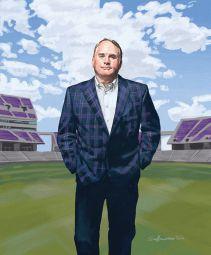
owner/publisher hal a. brown
president mike waldum
EDITORIAL
executive editor brian kendall
managing editor samantha calimbahin
contributing editor scott nishimura
contributing writers sadie brown, jenny b. davis, tina howard, malcolm mayhew, josie villa-singleton copy editor sharon casseday
editorial interns malena bell, jessica strange, renee umsted
ART
creative director craig sylva
senior art director spray gleaves
advertising art director ed woolf
contributing photographers olaf growald, crystal wise
ADVERTISING
advertising account supervisors gina burns-wigginton x150, marion c. knight x135
account executive tammy denapoli x141
brand manager scott mobley x140
customer support susan peterson x131 sales interns jessie conn, alison parks
MARKETING
director of events & marketing robyn lacasse
digital marketing & development director robby kyser
direct marketing manager katelyn needham
marketing strategist sarah benkendorfer
Corrections? Comments? Concerns? Send to executive editor Brian Kendall at bkendall@fwtexas.com.
An Interview with Mayor Betsy Price
Ways to Make Our City (Even) Better
CORPORATE
chief financial officer charles newton
founding publisher mark hulme
CONTACT US
line 817.560.6111
800.856.2032
Fort Worth Magazine (ISSN 1536-8939) is published monthly by Panther City Media Group, LP, 6777 Camp Bowie Blvd., Suite 130, Fort Worth, TX 76116. Periodicals Postage Paid at Fort Worth, Texas. POSTMASTER: Send change of address notices and undeliverable copies to Fort Worth Magazine, P.O. Box 433329, Palm Coast, FL 32143-3329. Volume 23, Number 8, August 2020. Basic Subscription price: $23.95 per year. Single copy price: $4.99
Women Who Forward Fort Worth






Sad but if it means we are all here for the future, I guess we can manage.
-CK Meyerson
Spoiler alert: 2020 is canceled.
-Natalie Weeks

Does that mean it supplements vitamin D in the spirits too?
-Mark Nance
DIGITAL EDITION: The virtual editions of both current and previous issues are available on our website. Flip through the pages to read more about the great city of Fort Worth by visiting fwtx.com.
They were in Carrollton last Friday. Opened at 5 p.m. Drove by around 4:30, and the line was stupid long. I heard the wait was 1 1/2 – 2 hours. I drove right back home.
-Dehia Terihay WTH? Only two stops in all of Tarrant County? Missing out on tons of business, Fletcher’s.
-Michael Landers

Save the (new) date — due to recent developments with COVID-19 and our own concern for the well-being of partygoers, our Best of Fort Worth party has officially moved to Oct. 10. If you’ve already purchased a ticket, it’ll still be good for the new date. So, keep those Hawaiian shirts handy. We promise it’ll be worth the wait. fwtx.com/best-of-2020
Visit fwtx.com for the full story.
» Shut Down 10 Days After Opening, Tarantula Tiki Lounge Considers Its Future
Following the second shutdown of bars last month, businesses like Tarantula Tiki Lounge have to flex their creative muscles again to make ends meet.
» Austin-based Western Brand Finds Home in the Stockyards Tecovas is the first tenant to open as part of a two-building renovation project in the Stockyards.
» Film Studio Moves Into West Seventh Area

A new studio is bringing the lights, cameras, and action to West Seventh.

follow us for more @fwtxmag











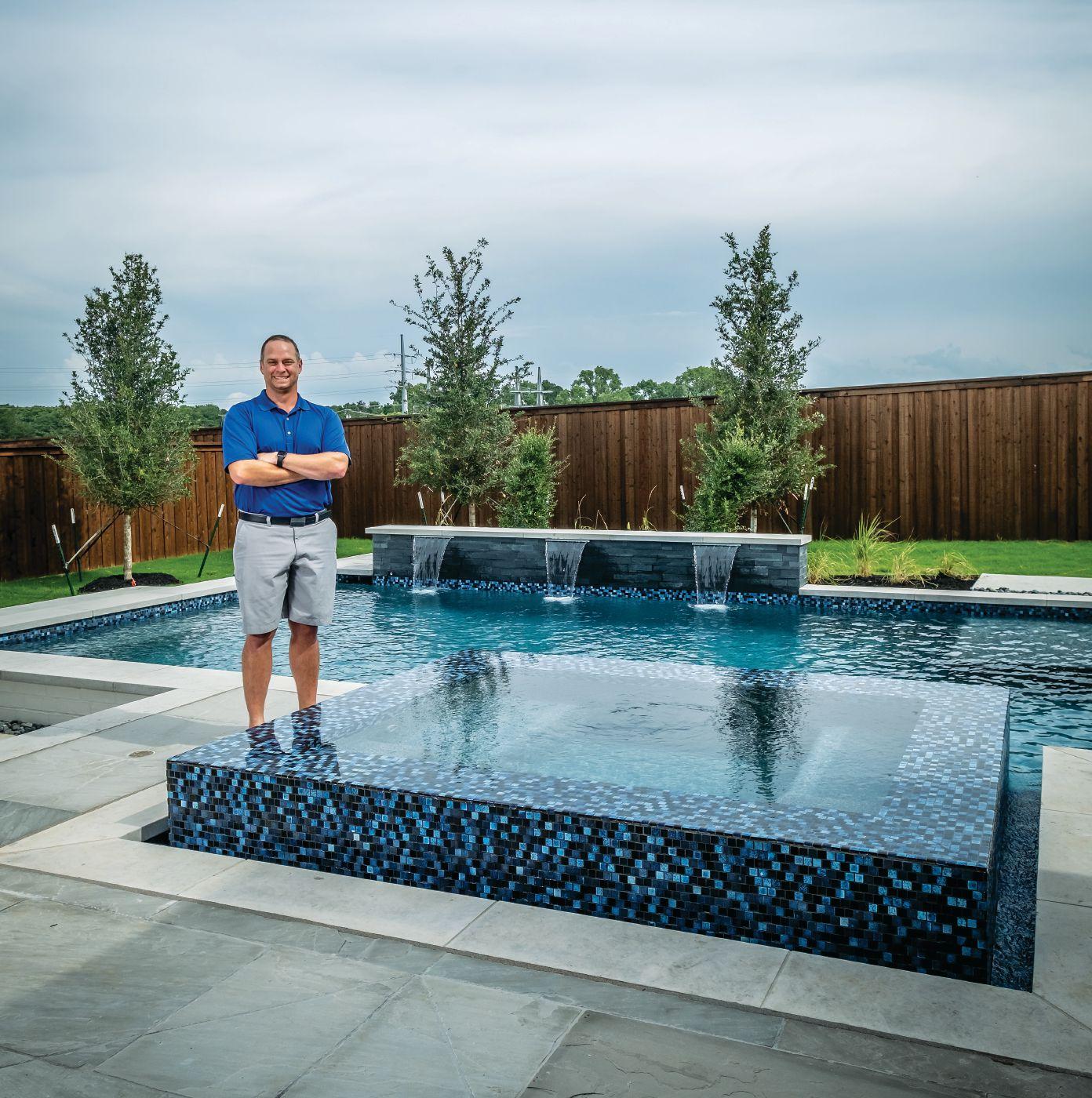




BY MARY MURPHY
Since March, the amount of domestic violence homicides reported in Tarrant County has exceeded the total number of cases reported in 2019. SafeHaven, the largest and most comprehensive domestic violence service provider in the county, is doing all that it can to prevent these homicides from happening while simultaneously supporting survivors of abusive relationships.
When the pandemic first began, SafeHaven saw a spike in hotline calls. As Shelter in Place was implemented for Tarrant County, the phones quieted, only to skyrocket again at the beginning of May. Now, the hotline’s call volume is 30% higher than it was last year. Although COVID-19 is not a direct cause of the violence, it is a contributing factor in the uptick of cases.
“We have viewed COVID-19 as another tool in an offender’s toolbox,” said Kathryn Jacobs, CEO of SafeHaven of Tarrant County. “We’ve seen the violence of cases increase. A lot of victims have been trapped in their homes. We have more catalysts [for violence] than we did before because COVID-19 has brought out a lot of these stressors.”
Current circumstances have allowed offenders to abuse their partners in secret, using COVID-19 as a tool to keep victims from going to work or seeing friends and family. Women calling SafeHaven’s hotline have reported cases of their partners tying them up to keep them home or leaving weapons at the door as a warning for them not to leave.
In one recent presumed partner homicide, says Jacobs, a man murdered his significant other, wrapped her in a tarp, and left her on their bed for two weeks. She wasn’t discovered until he confessed what he had done.
Heartbreaking cases like this are one of the many reasons why Jacobs is so passionate about developing SafeHaven’s High Risk Team, a group that assists the county’s most high-risk victims while working toward systemic change with leaders in the community. As of right now, there are less than 10 people on the team — a vast gap in comparison to the amount of high-risk cases in Tarrant County. More than 1,000 cases were reported last year, and with COVID-19 in play, the number is only tracking up. SafeHaven recently requested COVID-19 funding from the City Council to




assist in its mission to expand the High Risk Team.
“[This] is entirely a COVID expense,” said Jacobs. “None of the data supports that we would have this number of homicides were it not for a global pandemic.”
While they wait for the verdict on funding, SafeHaven is continuing to fight domestic violence, doing its best to assist high-risk victims and provide services to survivors.
SafeHaven’s 24-hour hotline is still up and running. It is accepting (contactless) donations. It’s providing counseling and legal aid to survivors and running the Partner Abuse & Prevention Program for offenders (via Zoom). And of course, shelters in Fort Worth and Arlington are still open, with proper health precautions in place. While all of these services support SafeHaven’s mission, says Jacobs, the shelter and High Risk Team are the two main interventions used to save lives.
“[Our other services] are all really important in this work, but they don’t save a life,” said Jacobs. “[The] shelter and High Risk Team do. With a High Risk Team, getting your community’s homicide number to zero is entirely possible. It’s been done other places. Why can’t we also do the same?”


KLZ travels the world to find the most beautiful stone. Your home is very precious and with that in mind we search far and wide to make sure that every one in our family will help and serve your family. Take the time and stop by and be amazed at our selections and friendly faces. After all you really can’t afford not to.


BY JESSICA STRANGE
THE SITUATION CHANGES DAILY AS LOCAL COVID-19 CASES SURGE, BUT AS OF PRESS TIME, THE FORT WORTH INDEPENDENT SCHOOL DISTRICT SAYS IT PLANS TO RESUME CLASSES AUG. 17.
by Renee Umsted
It seemed like a natural transition from The New Normal.
That’s what Lauren Childs, owner of art gallery Fort Works Art and founder of the nonprofit Gallery of Dreams, says of Sounds of Resilience, a new grant program for Fort Worth musicians.
“Let’s support these musicians,” she says. “They will create if they’re supported.”
Childs, the administrator of the initiative, teamed up with musician Abraham Alexander to create a project similar to The New Normal (which benefited visual artists), adapting it to encourage local musicians to get back in their studios and begin producing again.
The program invites musicians to perform two original songs explaining their ideas about resilience and upload the recordings to YouTube or Vimeo. Then, Alexander and a team of five other professionals in the industry — including T Bone Burnett, Amy Miller, Miguel HarthBedoya, Troy Campbell, and Rosana Eckert — will select the 35 artists who will be awarded $2,000 each and the six who will receive $5,000 each. The six finalists will be paired up, each group writing another original song and performing it at Bass Performance Hall.
This project is meant not only to support the musicians financially but also provide bonding and networking opportunities.
This project has emerged in an ever-changing environment characterized by the uncertainties of an ongoing pandemic and the calls to push back against racism and oppressive systems.
“To bring all of that to the forefront with these musicians, talking about what it means to them to be resilient through these times, I think that music will speak to the community at large as well,” Childs says.
Panelists will base their choices on the quality of the music, and applicants will also have the chance to explain their loss of income during the pandemic and what they would do with the grant money.
This project is meant not only to support the musicians financially but also provide bonding and networking opportunities. The musicians will be able to showcase their work to the selection panelists, many of whom have influence in the industry, Childs says.
“Our panel will create so many opportunities, in my opinion, for all of the musicians applying, whether selected or not,” Childs says.
In addition, she says she hopes musicians will discuss their work with each other and strengthen their community in that way. Unlike other grant programs for artists, the funds for Sounds of Resilience are set aside only for Fort Worth musicians.
Childs says she expects about 200 musicians will submit work to be considered by the panel, the same number of artists who participated in The New Normal. The application period closes Aug. 2.
For now, parents have two options — send their children to school for full-time, in-person learning or receive virtual instruction at home. Some working parents have no choice but to send their children to school. As of July 16, 16,914 students have been registered, with 54% choosing inperson classes and 46% choosing virtual.
Here’s a general idea of what the school year may look like.
IN-PERSON According to a FWISD press release, “Families selecting in-person instruction need to be prepared for a school environment that is socially distanced, limited in movement, and differentiated in instructional delivery methods.”
All staff and students will be required to wear a face mask — or shield where appropriate — while indoors. Students will also need to adhere to 6-foot socially distanced requirements in and out of the classroom. Classrooms may also use desk dividers, and hand sanitizer and disinfectants will be a staple in every room.
To limit the number of students in the cafeteria at a time, breakfast and lunch will be “served through alternative means.” Custodial staff will clean high-traffic areas frequently throughout the day, especially restrooms.
ONLINE According to External and Emergency Communications Executive Director Clint Bond, FWISD has “developed a robust online curriculum that far surpasses the ‘engagement’ options we used in the spring … Teachers are undergoing virtual training between now and the start of school to develop robust in-person and virtual curriculum.”
The district purchased 3,160 additional Chromebooks and over 11,000 hot spots to ensure accessibility for all students.
Online learners will be required to engage in instruction for at least four hours daily. Should they need additional help, teachers will have set office hours for students to contact them. All core academic courses will be available virtually, while some electives may not.
Students will follow the same curriculum in their virtual classroom environment as their in-person classmates. They can expect to receive numerical grades, unlike the pass/fail grading of last spring. Special education services will be offered virtually, as well.
Keep an eye on fwtx.com for further updates on FWISD’s plans for the upcoming school year.
Silver Star Spirits is proud to announce the launch of our first Straight Bourbon Whiskey.
Appropriately named “1849,” this 2020 release is in honor of our Fort Worth home and was released on June 6th 2020, the day of our beloved City’s birthday. Fort Worth, Texas, was originally formed on June 6th, 1849, as an army outpost on a bluff overlooking the Trinity River, where millions of cattle were herded on the Chisholm Trail. Thus, this city we call home is known as “Cowtown.”
Silver Star 1849 Straight Bourbon Whiskey is our first release from a select number of mature bourbon barrels. Silver Star 1849 Straight Bourbon Whiskey has been patiently resting in our barrel room here in Fort Worth, Texas, the “place where the West begins.”
The newest member to our lineup, Silver Star 1849 Bourbon will be available at our distillery only, until August 1st when at that time it will become available for our Texas retail partners to purchase and feature. We welcome you and your friends to come by and pick up a bottle of Silver Star 1849.
Visit our website: www.silverstarspirits.com for distillery hours and updates
I welcome you to try my most recent Whiskey Expression – 1849 Straight Bourbon Whiskey – Kirk Richards Whiskey Maker

BY RENEE UMSTED
The news of Vanessa Guillén’s death sparked artist Juan Velázquez to action.
He didn’t know Guillén personally, but as a soldier himself and father of a daughter, Velázquez was particularly moved by the U.S. Army specialist’s death and experience with sexual harassment.
“Fighting for one person that was a victim of sexual harassment is like fighting for all of them,” he says. “If I can help make the world a better place for my daughter, then I want to do that.”
To show solidarity with Guillén’s family, Velázquez decided to paint a mural, inviting the public to join him at 3604 Hemphill St. to help create the painting.

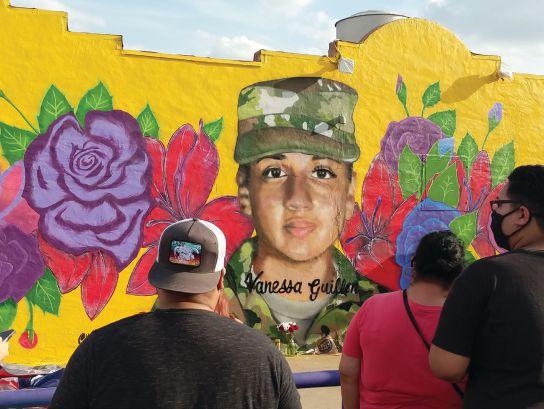
“If I can paint something that maybe makes them feel like they’re not alone, then maybe it helps them go through what they’re going through,” he says.
The event brought together artists and community
members alike, and they spent the hot July day covering a wall with a portrait of Guillén dressed in her military uniform, set against a background of colorful flowers.
The public’s interest in the project led Velázquez to organize another opportunity to paint a second mural at 1117 Belknap St. Copying a photo of Guillén, he and the volunteers painted her smiling face framed by petals, surrounded by sunflowers and roses — some of her favorites.
Velázquez says he hopes these murals will foster a sense of community among those who see them, especially during a time when people are feeling isolated. He also wants his art to raise awareness of sexual harassment and help tell Guillén’s story.
What he doesn’t want — for this project and for other works he’s done — is to incite hate or violence.
“It’s a tool that we can use for good, and hopefully, I continue to do that,” he says.




BY







Samantha designed this leopard chiffon dress with Symbology, a sustainable fashion brand on West Magnolia Avenue.
Samantha Stewart — amidst her glamorous gowns and flashy accessories that she showcases to over 23,000 followers on Instagram — is just like the rest of us. Raising two kids while working part time as a pharmacist at JPS in the middle of a pandemic, she admits these past few months haven’t been easy.
But there’s a certain comfort she finds in fashion — what she refers to as her “drug of choice.”
“One of my manifestos is to dress how you want to feel,” she says. “If I’m feeling blah, I’ll still get dressed. Like [the other day], I wore a bright caftan. We just went to Fossil Rim, so I was in the car the whole time, but still, I’m happy to wear that. It’s comfy, it’s bright, it’s happy. I feel like [dressing up] is a way for you to put yourself in that mood before you’re in that mood.”
Making time for selfcare helps, too — even if it means starting the day as early as 5:30 a.m. Before her family wakes up, Stewart takes time to get some exercise, pray, write in her journal, and have coffee.




Then, she gets to work. Her fashion blog, Style of Sam, has become a platform to highlight causes she’s passionate about, from promoting black-owned businesses to educating her followers about sustainability. She recently collaborated with Symbology Clothing, a sustainable fashion brand located in the Etico shop on Magnolia Avenue, to design a dress — a chiffon, blush, and metallic leopard print ensemble reflective of Stewart’s uniquely glamorous style.
“[Fashion] is an outward expression of what’s inside,” she says.


“Whatever makes you feel good about yourself, or strong or empowered, if that’s a pearl earring or diamond necklace or a ring that has sentimental value and you put it on and it makes you feel good, then do that. You do you.”
Find Stewart on Instagram (@styleofsam) and styleofsam.com.
The American Medical Association’s newly elected president says controlling the spread of COVID-19 is up to us.
BY JESSICA STRANGE
When Fort Worth allergist, Dr. Susan Bailey, became president-elect of the American Medical Association last summer, there was no way to predict that we were months away from a global pandemic. But she found herself smack-dab in the middle of one by the time she was officially sworn in as the 175th president of AMA on June 7. While COVID-19 has changed the nature of her new position, Bailey remains steadfast in her mission: Help doctors be doctors.
FW: How has the pandemic changed your goals as president of AMA?
SB: Having been in private practice all of my career, I am passionate about the importance of the independent private practice physician and our health care system. My goals have been to work to relieve the many administrative burdens that physicians face now, to eliminate dysfunction in the system that comes between them and their patients. I wanted to work on physician burnout.
None of those goals have really changed since the pandemic began. If anything, they’ve become more focused and more important than ever because there are many things literally coming between physicians and their patients now. There are things that they’ve got to deal with that they’ve never had to deal with before. So, it’s still my goal to help doctors be doctors, which has always been my motto.
FW: There’s a constant flow of information about COVID-19. We’re
learning new things every day. Sometimes it’s conflicting. Sometimes it’s politicized. What sources do you find most credible and reliable for people to look to surrounding the virus?
SB: It’s important to look to our public health authorities, academic medical centers, and medical research in journals like JAMA and the New England Journal of Medicine. It’s important to look to the science.
The AMA has been an incredible source of information about COVID-19 to physicians and the public. I’m really proud of the work that the AMA has done to get that information out. For example, the AMA cautioned about how the new COVID-19 antibody test had some issues and shouldn’t be used as a guarantee that someone is immune even before the CDC came out with that information. So, looking to our medical society is also an important source of information.
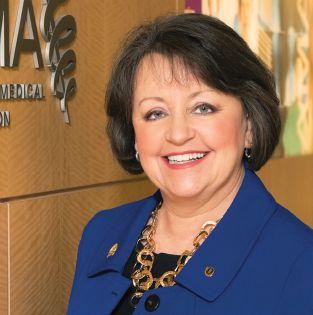
FW: What is the best indicator of how Tarrant County is handling the virus?
SB: We knew that [case numbers] were going to go up when things started to reopen and also when we were able to do more testing. So, I don’t think that the number of new cases is necessarily an indicator of how dangerous the virus is right now. I think looking at hospitalizations and, of course, looking at deaths are much more reliable indicators. Even though hospitalizations and deaths nationwide are trending down, that’s not what’s happening in Texas. Hospitalizations are up, deaths are up, and that’s incredibly concerning. The only way that we know how to slow down this virus, since they don’t have treatment and we don’t have a vaccine yet, is by basic public health measures that we have advocated: Wear a mask, keep your distance, and clean your hands.
FW: Do you think if the majority of Texans follow those measures to their best ability, we can change the trajectory and keep from having to go back down on strict lockdown orders?
SB: Yes, we have the power to control the trajectory of this virus. But it’s going to take all of us … This is one of those situations where individual actions have a tremendous impact on the community at large.
FW: Is COVID-19 here to stay?
SB: I do believe COVID-19 is here to stay. Since we’re not seeing a decrease in cases during the summer, it’s not going to be a seasonal virus. Until we get a vaccine, it’s going to be with us for a while. I imagine that it’s going to be a long-term issue, and it may change the way we do some things forever.









Our three homebuilders rumble toward the finish line and get ready to hand off to a group of designers, who will outfit these luxury showrooms with the latest in furnishings and accessories.
BY SCOTT NISHIMURA
Fort Worth Magazine’s 2020 Dream Street — three luxury homes under construction next to each other in a cul-de-sac in Southlake — is roaring into a late-summer finish, with the homes due to be completed and open for three weeks of October tours to benefit a Wish with Wings, our official charity.
Builders Jon Atwood of Atwood Custom Homes, John Webb of Heritage Homes, and Travis Franks of WillowTree Custom Homes are due to finish construction in mid- to late-August and turn them over to a trio of designers who selected the colors, textures, and other finishes and will furnish and accessorize the homes for their showings. Atwood’s home at 1100 High Court, listed at $3.2 million, is under contract to be sold. WillowTree’s home, at 1105 High Court, is listed for sale at $3.795 million by
Realtor Tommy Pistana of Compass. Heritage’s home, at 1104 High Court, is listed for sale at $3.825 million by John Zimmerman of Compass.
Atwood, who built the magazine’s 2015 Dream Home in Southlake and went under contract during framing for that project, marveled at how close the three Dream Street builders are in their approach to the finish line.
“When you go out there today, all three houses are at the exact same stage,” Atwood said in mid-July. “Three different builders, with their three different philosophies, can get to the same point at the same timeframe.”
The homes are the latest in the magazine’s nearly two decades-long series of Dream Homes, in which the magazine collaborates each year with luxury builders, designers, and subcontractors to show off the latest in luxury. This year is the magazine’s first to team up on the construction of three

months. The homes are scheduled to be open for tours Thursdays-Sundays between Oct. 3 and Oct. 25. Tickets will be available in the coming weeks on the magazine’s website, fwtx.com.
A family of six from Oak Point in Denton County — husband and wife and four young children — took the Atwood home under contract. Realtor Jeannie Anderson of Compass has the listing for the 6,000-square-foot, five-bedroom home, a single-story contemporary ranch. The family was interviewing builders and had a checklist of desires, Atwood said. With his Dream Street home only in framing at the time, Atwood was able to make adjustments.
“They wanted single-story, with four bedrooms, spread out,” Atwood said. “I had it. Big backyard. Private.” Check marks to both. The couple was interested in solar energy roof tiles, but the cost was too high, Atwood said.
The family wanted a swimming pool, already in the plan. The dad wanted an automated cover for the pool to protect the children. That was put into the plan. “It was a meant-to-be situation,” Atwood said. “I just think we hit every one of their checklist” items.
This wet spring weather and COVID-19 weren’t significant issues in the construction schedule, said Atwood, who’s preparing to hand the

house off to designer Dorian Stacy Sims, of Stacy Furniture & Design. Suppliers are reporting they’re depleted on some products that were planned for the finish, Atwood said. “We’re re-selecting” products in those cases, Atwood said. “Those changes might just be to get us through the show.”
Travis Franks’ WillowTree is both one of the builders and the developer of the 11-lot Oxford Place, home to the Dream Street. The WillowTree home is a 7,551-square-foot, twostory home with five bedrooms, a cross between transitional and contemporary. All lots in Oxford Place are at least 1 acre.
“We’re at final stages of paint; we’re at all of our fixtures,” Franks said in mid-July. “The pretty stuff is starting to all filter in as we speak. We’ve had a tremendous amount of team effort getting this done. It’s fascinating to see the teamwork from trade to trade.” Susan Semmelmann of Susan Semmelmann Interiors is the WillowTree home’s designer.
The house, like the others, has generated activity and positive feedback from prospective buyers. “At this stage, it’s hard to see the house the way it’s going to be at the end,” he said. “It’s going to be a big reveal.”
Webb’s Dream Street home is 7,200 square feet and two stories with five


bedrooms, in the style of modern Hill Country. Construction has been going at a fast pace since he received his permit Feb. 13, he said. “We’re projected to complete the house, end of August, which is almost like record time for a big house like this, six and a half months,” Webb, who built the magazine’s 2019 Showcase Home Colleyville, said in mid-July.
“We’re finishing up the paint this week. We’ve got light fixtures and plumbing fixtures and hardware going in next week. And next week, we’ll also get an electric meter on the house so we can get our air conditioning on. We’re going to set our kitchen cabinets
the following week. The outside of the house [stucco and stone, with a standing seam metal roof] is almost finished. We’ve got the driveways in. The yard has been graded, leveled out so it’s almost ready to start landscaping.”
Traci Darden of Elements of Design, who does the interiors for all of Webb’s homes, is handling the interior of Heritage’s Dream Street home.
Webb’s not seen troubling issues in getting products on time, he said. “Most of the materials are readily available.” And “our labor force has been ready, willing, and able at any time to work on the house.”
Fort Worth Magazine has teamed up annually for two decades with luxury homebuilders, designers, Realtors, and subcontractors to build Dream Homes and show off the latest in building, design, and fashion trends. Here are the Dream Street partners who’ve come on board so far for this year’s Dream Street in Southlake’s Oxford Place development.
1104 High Court, Lot 7 (Listed for sale, $3.825 million)
Builder: Heritage Homes
Home plans: Paragon Design Group
Interior: Elements of Design
Realtor: John Zimmerman, Compass
Appliances: The Jarrell Co.
Cabinets, kitchen: The Kitchen Source
Cabinets, master closet and all other: Mike Conkle’s Custom Cabinets
Concrete flatwork: Metroplex
Concrete Construction
Countertops fabrication: Absolute Stone & Tile
Countertops material: KLZ Stone Supply
Doors, exterior: Quarles Lumber
Drywall and texture: Alliance Drywall
Electrician: C&B Electric
Fencing, iron and automated gates: Lambert’s Ornamental Iron
Fencing, wood: Lambert’s Ornamental Iron
Fireplace inserts, interior: Overhead Door
Company of Fort Worth
Fire protection systems: Safe Life Fire Protection
Flooring, carpet and wood, materials and labor: Vintage Floors
Flooring, tile materials: Florida Tile
Flooring, tile-setting labor and supplies: Galvan Floors
Framing: Lone Star Framing & Construction
Garage doors/openers: Overhead Door
Company of Fort Worth
Garage epoxy coatings: Premier Custom Floors
Gutters: Loveless Gutters
Hardware/cabinet hardware: Pierce Fine
Decorative Hardware and Plumbing
HVAC: ICE HVAC
Insulation: New Leaf Foam Insulation
Landscape/irrigation/grade/lighting: Verde Outdoor Solutions
Light fixtures and outdoor lighting: Passion Lighting
Low voltage/AV/security: Multimedia Solutions
Lumber and trusses: DeFord Lumber Co.
Paint: Sherwin-Williams
Paint labor: J&V Painting
Plumbing labor and supplies:
Pro Serve Plumbing Pool: Leschber Designs
Roofing: Ramon Roofing
Shower glass and mirrors: Galactic Glass LLC
Site surveillance: SiteViewPRO
Stairs and railings: Lambert’s Ornamental Iron
Stucco material and labor: Centurion Stone of DFW
Windows and interior doors: Quarles Windows
Wine room cabinets: Vineyard Wine Cellars
3D virtual tour: Metroplex360
1100 High Court, Lot 6 (Under contract to be sold)
Builder: Atwood Custom Homes
Home plans: J Bolton & Associates
Interior: Stacy Furniture & Design
Realtor: Jeannie Anderson, Compass
Appliances: Expressions Home Gallery
Cabinets, kitchen: The Kitchen Source
Concrete flatwork: Blythe Concrete
Countertops fabrication: Absolute Stone & Tile
Countertops material: Levantina
Doors, exterior: Quarles Lumber
Drywall and texture: Alliance Drywall
Fencing, iron and automated gates: Magnolia Fence & Patio
Fencing, wood: Magnolia Fence & Patio
Fireplace inserts, interior: Overhead Door Company of Fort Worth
Fireplace, Isokern and insert: Overhead Door Company of Fort Worth
Fire protection systems: Safe Life Fire Protection
Flooring, tile materials: Interceramic USA
Flooring, wood, labor: North Texas Surfaces
Flooring, wood, materials: DuChateau
Garage doors/openers: Overhead Door Company of Fort Worth
Gutters: Loveless Gutters
Hardware, cabinets: Rick’s Hardware & Decorative Plumbing
HVAC: Hawk Air Company
Insulation: New Leaf Foam Insulation Landscape/irrigation/grade/lighting: Guardado Landscaping
Light fixtures and outdoor lighting: Passion Lighting
Low voltage/AV/security: H Customs Audio/Video
Lumber and trusses: Builders FirstSource
Paint: Benjamin Moore
Plumbing fixtures: Ferguson
Plumbing labor and supplies: Posey Plumbing
Pool: Claffey Pools
Pool table: Fort Worth Billiards
Roofing: Texas Tile Roofing
Shower glass and mirrors: Galactic Glass LLC
Site surveillance: SiteViewPRO
Stucco material and labor: Centurion Stone of DFW
Windows and interior doors: Quarles Windows
3D virtual tour: Metroplex360
1105 High Court, Lot 5 (Listed for sale, $3.795 million)
Builder: WillowTree Custom Homes
Architect: Flynn+Watson Architects
Interior: Susan Semmelmann Interiors
Realtor: Tommy Pistana, Compass
Appliances: Expressions Home Gallery
Cabinets, kitchen: The Kitchen Source
Cabinets, other: JIL Custom Cabinets
Concrete flatwork: Blythe Concrete
Countertops fabrication: Absolute Stone & Tile
Countertops material: Levantina
Doors, exterior front: M2 Metals Iron Doors
Drywall and texture: Alliance Drywall
Electrician: MPT Electric
Fencing, iron, and automated gates: Lambert’s Ornamental Iron
Fencing, wood: Lambert’s Ornamental Iron
Fire protection systems: Safe Life Fire Protection
Flooring, tile materials: Daltile
Flooring, wood, labor: North Texas Surfaces
Flooring, wood, materials: DuChateau
Garage doors/openers: Open Up
Garage Doors
Gutters: Loveless Gutters
Hardware, cabinets: Pierce Fine Decorative Hardware and Plumbing
HVAC: Hawk Air Company
Insulation: New Leaf Foam Insulation
Landscape/irrigation/grade/lighting: Joey
Design Irrigation and Landscapes
Light fixtures and outdoor lighting: Passion Lighting
Low voltage/AV/security: ComwareAV
Lumber and trusses: DeFord Lumber Co.
Paint: Benjamin Moore
Paint labor: J&V Painting
Plumbing fixtures: Expressions Home Gallery
Plumbing labor and supplies: Posey Plumbing
Pool: Claffey Pools
Pool table: Fort Worth Billiards
Shower glass and mirrors: Fashion Glass & Mirror
Site surveillance: SiteViewPRO
Stone materials: Texas Stone Creations
Stucco material and labor: MCD Stucco
Wine room cabinets: Vineyard Wine Cellars
3D virtual tour: Metroplex360

Arlington, Keller, Southlake, Granbury, Mansfield, Burleson, Weatherford and the surrounding areas.
Pairing any one of these classic choices with your outdoor chaise makes for the perfect summer recipe.
There’s still plenty of time to catch some rays and much-needed vitamin D before the cooler months strike. These top-notch swimsuits, provided by local retailer Everything But Water, should provide the right amount of confidence to hit the pool. The only thing you need to decide is the kind of tan line you’re looking to sport.
All swimsuits are available at Everything But Water, 5221 Marathon Ave., everythingbutwater.com.







Julia Heaberlin, a critically acclaimed writer
and award-winning journalist, chats with us about her new novel and living and writing in these COVID-19 times.
BY MALCOLM MAYHEW
These times of uncertainty will someday, surely, make a great backdrop for a book by local author Julia Heaberlin. The Texas native has, after all, made a name for herself as a masterful suspense writer: Her critically acclaimed novel Black-Eyed Susans climbed up international bestseller lists and landed a television deal with Sony Pictures, and Paper Ghosts was a 2019 finalist for the International Thriller Writers award.
This month sees the release of her fifth novel, We Are All the Same in the Dark (Ballantine Books), a nail-biter about how tragedy and murder change the lives of people living in a small Texas town.
FW: Was there a particular incident or case that inspired this story?
JH: This thriller is not inspired by a real case, but I definitely wanted the novel to be haunted by that gritty true crime feeling. My book ideas always begin
with a tiny visual in my head that won’t go away. In Black-Eyed Susans, it was a bird’s-eye view of a teenager lying in a Texas field of yellow and black flowers with a scattering of old bones. In We Are All the Same in the Dark, I was haunted
by a lost girl, mute with only one eye, blowing dandelions by the side of the road. The Texas town nearby was wrestling with its own missing girl. So that’s all I knew when I sat down at the computer to write this book.
FW: How has your life changed as a writer, especially one publishing in a pandemic?
JH: It’s like living in a draft of a novel with an editor’s red scribbles all over the margins. “Unbelievable!” “Ridiculous characters!” “Too many people die!” “Where’s the redemption?”
Every fiction author I know feels guilty about promoting themselves on social media while ICUs are war zones and the national conversation about race is so important. Writers are trying to find the middle ground because people still want fictional books they can vanish into. Independent bookstores — please support them! — need our dollars or they will disappear forever. Many authors, especially debut authors — please support them! — do not make a lot of money and need to pay their bills like everyone else.
FW: We Are All the Same in the Dark is set in a small Texas town. What is it about small towns that makes them such great settings for books?
JH: I think small towns are microcosms of big cities, just more intimate and tightly bound. There is the same ratio of good to evil. But if a siren goes out in the night, you can know the next morning where it’s been. It’s still a hopeful myth that small towns are all cookies and milk with no blood on the picket fence. So, when a body is found strewn in plastic bags off a nearby highway — a true story from my childhood — it’s more of a shock. There’s also something about the closeness, heat, and mystery of night in a small Texas town. The roses and velvet smell of it. I remember it floating through my bedroom window in Decatur while I read from a stack of library books. I specifically liked dark, moody British books like Rebecca (by Daphne du Maurier). I never dreamed back then



that I would write a book that would be published in the U.K., where I’m oddly more popular than in the U.S. But I like to think the gothic seed was planted right there on the window seat my father built for me.
FW: Fort Worth figures in some of your thrillers, especially Black-Eyed Susans. Readers run into places in your books they know in real life. What is your emotional connection to Fort Worth?
JH: Fort Worth is tied with London as my favorite city. I love its arty culture, warmth, philanthropy, Western backbone, and that cowboy hats are as regular as baseball
caps. When I was a kid living in Decatur, it was a big adventure to hop in the car with my family and head to Fort Worth. I roamed around the Amon Carter and tasted the wild dust of all those Russells and Remingtons many, many times. I saw my first plays at the Scott Theater and stood in awe when the Kimbell was built. So, it was fun to plant my heroine in Black-Eyed Susans in a Fort Worth neighborhood and have her wander familiar places.
FW: Since you mention Whataburger a couple times in your new book, I have to ask: What’s your Whataburger go-to?
JH: A large fry and medium Dr Pepper. Whataburger, hands down, has the best Dr Pepper “mix” and chewing ice. Those Dr Peppers have seen me through many long nights of writing. It’s a bonus if Ronaldo takes my order in the drivethrough and calls me sweetie. Ronaldo is really the one you should be interviewing. He is a Whataburger fixture in Grapevine.
FW: You worked in the newspaper industry many years. How has the newspaper business inspired you as a writer?
JH: Making up stories and being a journalist are two very different occupations, no matter what some people say. I had a lot to learn when I sat down to write my first book. A few things carried over. My fascination with true crime. A compelling interest in knowing what happened to victims long after a trauma occurred. A desire to portray women as kick-ass as men. And an obsession for my research to be accurate. No matter what I’m tackling — dementia, hallucinations, the use of mitochondrial DNA to identify old bones, the Texas death penalty, living with a prosthesis — I want it based on facts. So, I’ve stood outside the death house in Huntsville during an execution. I’ve regularly bugged famous forensic scientists who helped me devise twists. Not that I haven’t messed up a couple of details in an 85,000-word book. Once was about a gun. And my Texas readers let me know so I could fix it. You know what? Those readers were from Fort Worth.
FW: If the characters in your books were real, which one would you want to sit down with and find out more about?
JH: This may sound weird, but I know my characters like I know myself. There are no secrets. The character I want to sit down with is the heroine in my next novel. I’m irritated that she hasn’t shown up yet.

Bringing high design for a low cost, this 27-yearold engineer starts an interesting side hustle.
BY JOCELYN TATUM
Kylie Broton walked into the house with the ambitious gait of a Fortune 500 CEO.
She gazed around the room and studied the environment and its composition with the eye of an interior designer. Her purpose? To bring the oftentimes unattainable quest for high design to those whose pocketbooks just got a little tighter.
But the 27-year-old didn’t study interior design. Like many who attended Purdue, a university known for its great engineering school, she studied electrical engineering and landed a solid-paying job in what she would describe as a man’s world at the largest defense contractor company in the U.S.
Then, the current pandemic sent her home for several months where she had time to really think about her future dreams. So, she posted on a community Facebook group that she would be willing to design homes for free and create a “design board” for prospective clients as long as she can use it to build her portfolio.
People jumped.
The timing could not be more perfect. Being stuck at home has people cleaning, nesting, and buying puppies — making their home a place where they want to be all of the time. And with less cash on most people’s hands
these days, Broton has clever ways to cut costs to a minimum.
“I work with your existing furniture to eliminate costs. I will find you the best deals,” she said during one consultation. “I’m using my engineering brain to optimize space [and cost] in interior design.”
Thus, Kylie’s side hustle.
One of her first clients has worked with some of the best designers in Fort Worth, but Kylie caught her attention because it was affordable. Once she met her and heard her ideas, Courtney Holt was a new fan.
“One of the things that sets Kylie apart from the rest of the many talented designers in Fort Worth is that she immediately ‘got’ my style and what I wanted in a way that I didn’t even understand. The design boards that she sent me were exactly what I was looking for, but yet pieces I would have never selected or put together on my own,” Holt says.
Holt’s Monticello home was featured on HGTV in 2019 when she worked with a designer on several rooms upstairs. With two elementary schoolaged children and a few months of homeschooling, she had rooms downstairs that needed amends.
Broton asked a few questions and looked around the house. She took pictures of the rooms and furniture. Then
her fingers started to tap her phone faster than a chicken could eat corn. She was already in design mode.
Using what she already had — rearranging some things and getting rid of some furniture to declutter — while adding a few affordable items like a discounted rug here and a 60%-off chandelier there, within hours she had a cost-effective digital design board ready.
She nailed it on the first try, Holt said.
“She chose vintage wallpapers woven with my favorite colors, glamorous gold hardware, and midcentury pieces to create a home full of things that I love. It seems like such a simple concept: to choose things you love and bring you joy. But when faced with literally thousands of options from one retailer, how do you decide? What if all of the things I love look like one hot mess when they all come together? But Kylie did it for me,” Holt said.
Traditional designers make a healthy commission from the oftentimes expensive furniture, fabric, art, hardware, and rugs they put into their design plan. In this current economic environment, some of those fees just aren’t feasible. So how does Broton make money?
She has a formula some millennial entrepreneurs capitalize on that includes a tool social media influencers use called rewardStyle affiliate links.
“RewardStyle influencers have exclusive access to an innovative ecosystem of monetization tools, a global network of 5,000 retail partners, and tailored growth services — all designed to power the monetization of your content,” the company’s website reads.
She will either post a link to her social media site for a product, or she will simply send the link to her client with their design board. When they click on it, it will take them to the site, but the web address now has a “rstyle” in front of the destination site’s web address. She gets the commission once the client purchases the product.
She also participates in other trade programs with distributors and suppliers. When she uses their products, she gets a discount at wholesale. Broton said every company’s trade program is a little different.
As her business grows, the companies or vendors she collaborates with grow - a form of content marketing.
She plans to make the design process more efficient by connecting with clients through her social media platforms and creating virtual pandemic-friendly appointments using video conferencing. This allows her to work with more people using less time. Prices would go up when she works with clients face to face in Fort Worth on big ongoing projects, who may want a little more than inspiration.
Broton’s quest started when she bought a condo during the 2018 holiday season. Her boyfriend challenged her to find the lowest price per square foot in Fort Worth. She was up for it.
The previous owner smoked and had lots of cats. But Broton had made it “livable” by February 2019. She foraged into all things design for a year. When all was finished, she loved her new home. She also learned where to cut costs. And when the world hit pause, Broton was ready to design for others.
She’s resourceful, and with her engineer mind and love for interior design, she gave her all into making her place a home she would want to work from and live in during a pandemic. Then she thought, why can’t I bring this love to other people? So she did.
“She has the mind of an engineer with the eye of a high-end designer. She might also be a little psychic, because I’m still sitting here wondering how in the world she does it,” Holt said.
Broton and Holt will be working from home indefinitely, along with many more all over the world. She may have just found her niche doing quality design for people’s quarantine quarters.
“Success is when opportunity meets preparedness,” Broton said, a motto borrowed from a favorite uncle.






BY LAUREN WESSINGER
Even the most challenging situations and circumstances feel easier to manage when one is rested. It’s especially important in the challenging environment the world is in today. Strong immunity relies on good sleep.
Sleep deprivation is proven to be an underlying issue in everything from anxiety and depression to diabetes and heart disease. But the good news is, risk significantly lessens when good sleep is the norm.
Sleep is a highly active process. It’s the main time of restoration for the body, and a good night’s sleep is the most effective way to repair and restore. The brain can be trained to sleep better just like any other skill.
Set up a sleep environment and establish a relaxing bedtime routine. Take a warm bath, read a book (preferably one on a reader with no backlight or an actual paper book), listen to soothing music, or meditate.
Make sure the bed is comfortable and the room is cool. Experts recommend a surprisingly cool room temperature of between 60 and 67 degrees. Snuggle up under a down comforter like it’s winter all year long.
Don’t watch TV or work in the bedroom. The idea is for the brain to think of the bedroom as only for sleep.
Lighting is key. Humans all have a natural circadian rhythm that follows the sun. Smart phones, laptops, TVs, and even bright lights from outside can all disrupt the circadian rhythm and suppress melatonin, telling the brain that it’s daytime. Melatonin is the body’s natural sleep aid, so to get serious about establishing a healthy sleep routine — no screens an hour before bedtime and keep the room dark.
Start prepping for great sleep during the day. Get as much exposure to natural light as possible. In this day and age of working inside, try to use any breaks or lunches to get some sunshine. Sit outside for several minutes and just
soak it in. This will also help regulate circadian rhythm.
Limit coffee and alcohol. There is a common misperception that alcohol is a sleep aid. While alcohol might support falling asleep initially, it always causes a 3 a.m. wakeup call, and subsequent sleep is typically poor quality. Add sugar and dehydration on top of that, and it’s the perfect storm for a challenging day. Coffee to the rescue? There is nothing like a freshly brewed cup of craft coffee first thing in the morning. There is no research to suggest this is a problem at all, thank goodness. However, no amount of caffeine can regularly bandaid the adverse implications of insufficient sleep. Insufficient sleep brings an increase of adrenaline to get through the day, and layering caffeine over that all day is highly stressful to the body. Morning coffee is even better when it’s on the heels of a great night’s sleep. And, avoid it after lunch if sleep irregularity is common.

Get moving. Exercise is key to promoting good sleep. According to the National Sleep Foundation, as little as 10 minutes a day of walking, biking, or other aerobic exercise can “drastically improve nighttime sleep quality.”






























BY MALCOLM MAYHEW
Like most restaurants in Fort Worth and beyond, Marcus Paslay’s recently opened Provender Hall — his stylish ode to comfort food — was greatly impacted by COVID-19. It was days away from opening this spring when COVID-19 spread across the city, forcing the chef and restaurateur to close the doors before they even opened.
Paslay used the downtime wisely. Staff members were trained in the art of working in a restaurant in a postCOVID-19 world. The dining area was reconfigured to meet
social distancing requirements. Hand sanitizers were brought in, and deep-cleaning practices were adopted.
“Not being able to open actually gave us an opportunity to better prepare ourselves for this crazy new world we’re living in,” Paslay says. “We now had enough time to train everyone and get the proper protocols put into place. That way, we would be ready to open when we felt the time was right.”
Opened July 4, the restaurant is what Paslay calls a “Texas-style brasserie.” The menu focuses on Southern classics with a cheffy, Texas twist. Dishes include blackened






shrimp and grits with a blistered tomato beurre blanc and smoked half chicken with chimichurri and grilled lemons. There are also steaks, chicken gumbo, smoked pork chops, oysters on the half shell, and sides that include cheddarcheese grits and fried okra.
“The menu is what I think of as Texas’ greatest hits,” says Paslay, a native of Arlington. “These are dishes that, as Texans, were all a part of our diets growing up. But we’ve played around with the recipes a bit. They’re still familiar and recognizable, but we’ve made them our own.”
Paslay, who also owns Piattello Italian Kitchen and Clay Pigeon Food & Drink, is joined in Provender Hall’s kitchen by longtime Piattello chef Scott Lewis, who is now overseeing kitchen operations at all of Paslay’s restaurants.

operations at all of Marcus Paslay’s restaurants.
The restaurant occupies a two-story loft; the open kitchen is on the first floor, the dining room on the second. Some of the building’s original elements remain, including early 1900s fire doors.
Paslay’s original idea for a Mule Alley restaurant was vastly different than the finished product.
“We knew we wanted to do something with smoked meats, so we tossed around the idea of doing a barbecue joint,” he says. “After we familiarized ourselves with the space, we realized straight-up barbecue wasn’t the answer. We kept the smoked meats but added other Texas classics. Now we feel like it’s the perfect restaurant for the Stockyards.”
122 E. Exchange Ave., provenderhall.com

Most of us in the Fort Worth food community know Kari Crowe-Seher from Melt Ice Creams. But over the past few years, another local ice cream maker with a similar first name has been establishing herself as an expert cold treats’ maker.
Kerrie Thome of Fort Worth runs a small ice cream business called Starry Ice Cream. Since 2018, she has been selling pints of her handmade ice cream along Magnolia Avenue and at various pop-up events. She recently updated her business model to fit our current COVID-19 climate: She now delivers her treats to homes and businesses for free — a sweet deal indeed.
FW: How did you get started in the ice cream biz?
KT: I am originally from Wisconsin. My father’s family had a dairy farm there, and I have always felt very connected to those roots. In February 2018, I attended the Ice Cream Makers Short Course at the University of Wisconsin and became completely hooked. Two months later, I started Starry with a sold-out ice cream social in Boyd, Texas. My brother owns a restaurant there, and he helped me get started. After several months at his restaurant, I bought my own equipment and started working out of Locavore in Fort Worth.
FW: Tell us about the name, Starry Ice Cream.
KT: I love to make ice cream inspired by music and art. The name came to me while listening to “Starry Eyes,” by Roky Erickson, and then I
looked to Van Gogh’s “Starry Starry Night” for my color scheme. I’ve always been enamored by the stars. To me, the big dipper in my logo represents a thing that guides people to happier, better things.
FW: Your top flavors?
KT: My most popular flavor is Turtle Time. It is caramel ice cream, toasted salted pecans, and dark chocolate. I make all of the caramel by hand, which is not a quick process for me, so that’s why “time” is part of the name. My personal favorite is Raspberry Lemon Sherbet. It reminds me of my grandmother’s raspberry preserves that she made on the farm in Wisconsin.
Free delivery is available anywhere in Tarrant County. For flavors and ordering information, visit starryicecream.com.
A new mom and pop Italian restaurant has opened downtown. Al Dente Italian Trattoria quietly opened recently at 910 Houston St., in the space last occupied by Black Rooster Bakery. Brenda Cruz and Victor Lugo’s tiny spot is a classy affair: Diners sit at cozy bistro tables and are treated to warm, doting service. Its menu consists of Italian classics, from fettuccine Alfredo to spaghetti and meatballs and more eclectic items, such as caprese kabobs. The couple has opened restaurants in their native Puerto Rico, but this is their first Fort Worth outing. al-dente-italian-trattoria.business.site

For authentic Mex-Mex food, Los Tacos H’s on East Rosedale has been one of the city’s real standouts. A second location has now opened on the south side, at 3025 Cleburne Road. Owner Manuel Garcia specializes in the restaurant’s namesake, offering more than a dozen taco fillings, from carnitas to cactus, wrapped in warm, local corn tortillas. The restaurant’s real gems are the El Alambre H, a pile of grilled beef, bacon, ham, chorizo, cactus, and other ingredients on a bed of corn tortillas, and the huarache, a housemade fried masa base topped with refried beans, onions, cilantro, and streaks of sour cream. The restaurant also serves tortas, gorditas, quesadillas, and freshly made desserts. Plus, H’s offers the ultimate in social distancing: a drive-thru window. lostacohstx.com
Seventy-seven-year-old Roy Pope
Grocery was one of many local businesses shuttered by COVID-19. But a group of local restaurateurs is bringing it back. The effort to reopen the beloved west side grocery and grill is led by local chef Lou Lambert and operations partner Chris Reale (along with investors Mark Harris and Rodger Chieffalo). Former Clay Pigeon executive chef and James Beard semifinalist Bria Downey recently joined the team as the culinary director to help steer the menu, which is still in the works. Reale says the store should be open by fall.

2300 Merrick St., facebook.com/roypopegrocery

Restaurant news written and compiled by Malcolm Mayhew. You can reach Malcolm at malcolm.mayhew@hotmail.com or on Twitter @foodfortworth.
©2020 Benjamin Moore & Co. Aura, Benjamin Moore, Gennex, and the triangle “M” symbol are registered trademarks licensed to Benjamin Moore & Co. Color accuracy is ensured only when tinted in quality Benjamin Moore® paints. Color representations may differ slightly from actual paint. 6/20

When you find the perfect color, nothing else will do Perfection comes from our paint and our proprietary Gennex® colorants, together, creating results that are breathtaking.
Rely on Benjamin Moore® for premium quality and Gennex Color Technology, which makes our long-lasting colors, all 3,500 of them, one-of-a-kind. Unmatchable.

Soaring summer temperatures mean it’s time to turn to chilled treats to cool us off.
BY JOSIE VILLA-SINGLETON
Enjoying an ice cream or slurping up a snow cone quickly before it melts is undoubtedly one of Fort Worth’s favorite summer pastimes.
It’s no wonder that ice cream spots like Melt Ice Creams have
lines out the door as temperatures surge. Summertime is prime time for this scoop shop that treats its eager audience to fresh and seasonal flavors that showcase Parker County peaches, strawberries, and blueberries. Ice cream has a close cousin in frozen custard (the only
difference being the addition of egg yolk in frozen custard). And the best local place to devour one of these smooth, creamy creations is at Curly’s Frozen Custard, which also integrates fresh Parker County peaches into the treat.
Elsewhere on the frozen spectrum, we’ve got the snow cone. With its vivid colors and varying ice textures, the traditional snow cone consists of coarse ice, which provides the advantage of taking longer to melt. This makes it all the better to enjoy fun flavors like Tiger’s Blood. Places like Pelican’s SnoBalls specialize in a finer grain of ice that gives it an almost fluffy consistency.
When I was young, I would spend summers in Coahuila, Mexico, with my grandparents. I have many fond memories of going to “raspa” or “yuki” stands where a block of ice was hand shaved with a small tool before adding delicious flavorings that included tamarind, lime, and cucumber. The origin of a raspado goes back to pre-Columbian times when Teotihuacanos near Mexico City would gather snow from the tops of volcanoes. Luckily, we don’t have to scale mountains or even go to Mexico to experience and explore traditional Mexican frozen goods like raspados. They are right here in Fort Worth.
There’s a whole slew of shops throughout Fort Worth that sell Mexican style snacks (botanitas) and cold treats. You can find refined raspado flavors like guayaba or apricot at Alma’s Paleteria. They’ve gained popularity for their fresh paletas (Mexican-style popsicles), but each of their menu items is equally worthy of praise.
If you pay any attention to food trends on social media, you’ll

notice an uptick in a bright orange and red frozen drink known as the mangonada — you might also see it referred to as a chamango or chamoyada. This festive treat consists of ice mixed with fresh mangos and mango nectar for a slurry consistency that withstands the “melt” factor. Swirled throughout the drink is a bright red, spicy, and slightly sour chamoy sauce that results in a zingy, stimulating sip. Sometimes it’s served with a mango and chamoy paleta inside the cup. You can also top the drink off with diced mango drizzled in more sauce and candied tamarind wrapped around the straw.
Kokitos on Camp Bowie serves a delicious version of the mangonada amongst their extensive menu. When speaking with the owner, Ruben Santos, I learned that extreme attention goes into each of their drinks. For example, he chooses a particular type of mango, the ataulfo, for their signature mango drinks that they only offered when in season.
If spice isn’t your thing, try the piña colada at Kokitos. This over-thetop creation consists of a supremely satisfying frozen mixture of ice and pineapple placed inside a hollowedout pineapple. As if a massive pineapple drink isn’t enough, it’s topped with whipped cream, orange wedges, cherries, coconut chunks, and a festive umbrella.
The extreme concoctions don’t end there. At Michoacana Creamery, they serve a “sandia loca,” which means crazy watermelon, and it looks like a fruit salad that Willy Wonka would make. The most summer worthy of fruits is diced and placed back into its watermelon receptacle mixed with additional fruit and chamoy and given garnishes galore that include sugared candies and more fruit placed on skewers.
This is the time to enjoy the remaining days of summer. Despite everything happening today, we can all seek small moments of delight with a crunchy bite of snow cone or a gratifying lick of ice cream.










Load up the kids and head to Summertime in Grapevine, where all necessary safety precautions are in place. Enjoy plenty of adventure for the whole family, like SEA LIFE Grapevine Aquarium, LEGOLAND® Discovery Center, Lake Grapevine, waterparks and more. Save now with great hotel rates** and discounts on area attractions. Get together, get out and get away to Summertime in Grapevine!

Arrested and sentenced to 20 years at the age of 18, a young man loses his freedom and gains redemption.
BY LUCAS STRAIT

Have you ever heard the saying, “There’s no such thing as a bad person, just bad choices?” That’s bullshit. Some people are rotten to the bone and inherently evil. Some people carry nothing but ill intentions and criminal aspirations. Some people don’t think twice about who they hurt. Some people don’t deserve their freedom in society. This may seem harsh and unforgiving, but I feel I can say this because I spent over 10 years of my life with them — I was one of them.
Eighteen days after I turned 18, I was arrested for shooting a drug dealer in what was supposed to be a quick stickup and charged with armed robbery, aggravated assault, burglary of a habitation, and assault on a public servant. Before I could comprehend what my future had in store for me, I was sentenced to 20 years in the Texas Department of Criminal Justice (TDCJ), where I was immersed into the dark, nefarious, and violent culture of the prison system.
In certain sectors of TDCJ, the culture and social dynamics are almost unbelievable. Things like drugs, crime, violence, and racial segregation aren’t just accepted — they’re encouraged and oftentimes the only thing you can rely on to avoid being ostracized or victimized.
Despite the warped mindsets and immoral structures, there are clear values, distinct customs, and unwritten laws amongst the lawless that govern this corrupt society.
As I walked into my first prison dorm, the metal doors locking behind me, the guys on the pod started excitedly hollering “Quota Check!” Quota checks (i.e., heart checks) are the initiation process when one arrives at a new prison or is introduced
to one of the many prison gangs. They’re called heart checks because they’re a test to prove the level of courage one carries in their heart. Depending on who you are, what clique you’re affiliated with, or which prison you end up being assigned to, heart checks can be anything from one-on-one fights to two-on-one beat downs. You hear the war stories in the county jails from guys who have been to prison and given or received their heart checks. Most of the guys do thousands of pushups, shadow box, get into real fights, and mentally equip themselves. Whether that preparation was out of fear or bravado, I was never certain. I was one of those guys who did a lot of preparation for the moment. I exercised daily, got into numerous fights, and equipped myself mentally for the impossible odds. As I lay the few belongings I had on my bunk and scanned the environment, realizing that all eyes were on me, I was approached by a leader of the Aryan Circle (one of the white supremacy crime families that originated in prison). At least 6 feet, 6 inches tall and 220 pounds, this guy wasn’t exactly in my weight class. All that exercising I did for this moment got me to a whopping 155 pounds with my boots on. He held his hand out to introduce himself — first by name, then by title. We went through a couple casual conversation items: “Where are you from? How much time do you got? What gang are you with?” When the conversation hit a dull point, I asked if he’d be the one doing my heart check. He laughed and assured me he wasn’t. “We don’t do heart checks here,” he said. “It’s pointless. The guards will lock you in solitaire for having a black eye, and the
dorm will get put on lock down. We’ll see if you’re going to fight or not. Time will tell where your heart’s at.”
It wasn’t minutes later when I heard the familiar scuffles of a fight in the back of the dorm. I look up to see two guys fighting, and out of nowhere, another guy jumps in and beats the shit out of one of them. A few guys scramble to get the two cleaned up and wipe up the blood splatters off the ground and tables before the officers came in for their routine count. Sure enough, the guards noticed the trail of blood and immediately spot the guy with a mangled face. Just as the giant told me, he was thrown into solitaire, and the dorm was placed on a 24-hour lockdown.
Come to find out, the third guy who dominated the fight was actually in the same gang as the one he assaulted. Apparently, the guy who was brutally beaten violated one of the unwritten laws of prison; when the conflict started, he hit someone who wasn’t squared up to fight. In my neighborhood, that’s called getting the first punch in. In prison, it’s the spark that can ignite a riot. It was an eye-opening moment for me — two members of the same gang were forced to fight from highstake social pressures in order to prevent further violence and conflict.
There are many unwritten laws like this in prison. They’ve been constructed from events in the past that led to horrible outcomes — similar to the way
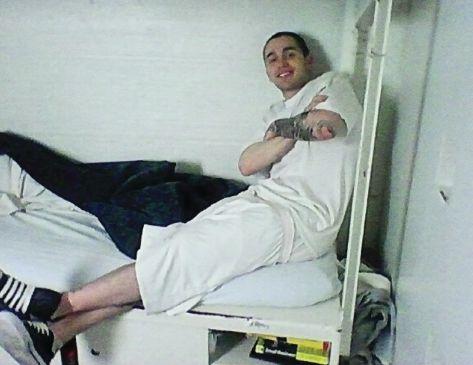
we construct laws in society. Only the outcomes in prison include gang rivalries, the disruption of criminal enterprises, violent racial or gang riots, and, in some cases, homicide. In a community of those who habitually show disregard for the law, the most typical form of enforcement is violence implemented within the structures of gangs.
I never joined any of the gangs inside the fences (although, I was heavily associated with several — it’s hard not to be when 95% of your community is affiliated). Regardless, I learned to govern myself in accordance with their laws. After watching that guy get brutally beaten by a fellow gang member, I realized I had a lot to learn in order to get through my sentence — not out of fear or obedience but out of acceptance and allurement. It was social compliance at its worst.

became my means.
Growing up, I had both positive and negative influences simultaneously teaching me what was right and what I could get away with. My mom was a strong Christian woman, working hard to provide for two young boys and instill values that would make us men. My dad, on the other hand, was a career criminal — mostly cultivating and trafficking narcotics. While I watched my mom struggle to make ends meet doing what was right, I watched my dad have an easier time doing what was wrong.
I was 14 when my dad was released from federal prison, and shortly after, he put a pound of marijuana in my hand and told me, “If you sell this and bring me the money, I’ll give you two pounds on the next re-up.” Three days later, I had more money in my hand than I’d ever had, and there wasn’t any looking back. Crime
It wasn’t long before I started testing the boundaries of what I could get away with. I quickly escalated from selling a little weed at 14 to stealing cars at 15 to breaking into houses at 16 and, by the time I was 17, I stole my first pistol. Some of my older friends were making fast money sticking up all the small-time juvenile drug dealers in Arlington, and I wanted a piece of that pie.
I was just released from jail for possession of marijuana and had nothing to my name but an illicit agenda. One of my contacts called looking for a connection, and I saw an opportunity to make some of that fast money.
We met at an apartment complex for what he thought was going to be a quick transaction. I knew it was going to be something entirely different. Within seconds, guns were drawn, and I began demanding his money. Somewhere between my hostile slurs and aggressive assaults, he attempted to grab the gun out of my hand. I fired once and then twice. Almost as if time had slowed down, I remember realizing how severe the situation had just become and how
urgently I needed to get out of there.
For the next couple of nights, I bounced around houses in Arlington. I wasn’t certain whether he was alive or not, but I was very certain I was in some serious trouble. On the third night after the incident, I was apprehended and charged with armed robbery, aggravated assault with a deadly weapon, burglary of a habitation, as well as assault on a public servant. After a trial, I was sentenced to 20 years in TDCJ.
You’d think being sentenced to 20 years at the age of 18 would have been my wake-up call and changed the trajectory of my life for the better. Unfortunately, it wasn’t. As I immersed myself in the prison culture, the like-minded inmates I surrounded myself with fortified my warped sense of morality. We reminisced on our wicked ways and built systems of mutual respect for one another based on our violent and illicit tendencies. Suddenly, the positive and healthy qualities that were instilled in me through adolescence were replaced with the desire to be ruthless, nefarious, and diabolical.
For the first five years of my incarceration, I immersed myself into the prison lifestyle. I got into fights for little

to no reason, I broke every administrative rule I felt like, I was tattooing, doing drugs, trafficking contraband, and manipulating guards. All the while, building a respectable reputation amongst my peers.
Within my first year, I got kicked out of my first minimum security prison because the administration determined they didn’t have the level of security necessary to house me (before that makes an impression, let me say this happens a lot. It’s so typical at minimum security prisons that we just call it “getting G4ed off the unit”). Regardless, at 19 years old with the mentality I had, it sure did make me feel like a badass.
The Texas Department of Criminal Justice classification department in Huntsville reevaluated my custody requirements and sent me to the medium/ maximum security unit Gib Lewis in Gatesville, Texas. At the time, Gib Lewis was in the top five most violent units in Texas. It was ranked No. 3 out of the 100-plus facilities for “use of force” — where guards have to use physical measures to restrain inmates. The median age of inmates was about 23, and 95% of them are affiliated with gangs. The majority of Gib Lewis inmates felt the same way as I — like they
were a real badass — and they were ready to prove it.
I got established at the unit fairly quickly, made a couple dysfunctional friendships, and continued to digress into the customs of prison culture. I continued my misbehaviors — tattooing other inmates from equipment we hand built from scrap electrical parts, drinking wine we brewed from orange juice and sugar that we stole from the chow hall, and getting into fights because that’s the fastest way conflicts are settled. I was in and out of “population” and medium custody on an annual basis. I’d get in trouble, go to 20hour lockdown for six months, be released back into regular population, get in trouble again, and repeat the process. It was all kind of a joke to me. It’s hard to feel like you’re being punished when you’re already in prison. I was doing whatever I wanted, regardless of the rules, and became popular amongst my peers for having an indifferent and callous attitude.
The culture in prison places a different value on these qualities. Words that have such negative connotations to the better half of society are glamorized by this class. People adopt and take pride in adjectives like “savage,” “cutthroat,” “greedy,” and even “homicidal,” and nobody blinks an eye. In fact, you can be anything but a sex offender, confidential informant, homosexual, or nonviolent individual. I always found that shift in judgment interesting. You could be a junkie who stole family heirlooms and snatched purses off old ladies’ shoulders to support your habit and be lauded. Just make sure you never told on anyone or find other men attractive; I guess even the lowest in life need someone to turn their noses up at.
Eventually all these qualities I’d developed and illicit behaviors I’d exhibited took me to rock bottom at Gib Lewis’ supermax compound, where it’s 22 to 24 hours a day (depending on whether the guards feel
like letting you out or not) in a 6-by-9 cell. And, even then, you’re stripped down to your boxers and handcuffed before you’re allowed out. Almost every privilege you’re afforded in prison is taken from you. You can’t hug your family when they come to visit. You can’t step onto the rec yard to feel the sunlight on your skin. You can’t watch your favorite TV show or play a friendly game of dominoes to pass the time. You’re locked in a cell where your meals and mail are passed through a tiny slot in the heavily secured metal door. This is where the most positive of spirits are destroyed and the most nefarious of spirits thrive.
Closed custody houses the worst that TDCJ has to offer. It’s the darkest and most frightening sub level of prison — it holds a stench of hostility. Inmates are sent to closed custody for acts along the lines of inciting riots, assault beyond first aid, and possession of serious contrabands like knives, cell phones, and drugs. While I wasn’t the worst inmate in this compound, I was certainly in my element.
I spent my first year in closed custody immersed in the deep webs of the criminal enterprises at work within our prisons. I helped traffic narcotics, phones, and money. Despite the limited mobility, this section of prison is notorious for its abundance of drugs and contraband. The gangs control everything — some even have power over the guards — and the majority of inmates only live by the unwritten laws of gangland, showing a blatant disregard for the rules set on them by the administration.
I lived a dual life up until this point. While I was known for the bad reputation I’d built amongst my peers in prison, I maintained
Continued on page 108


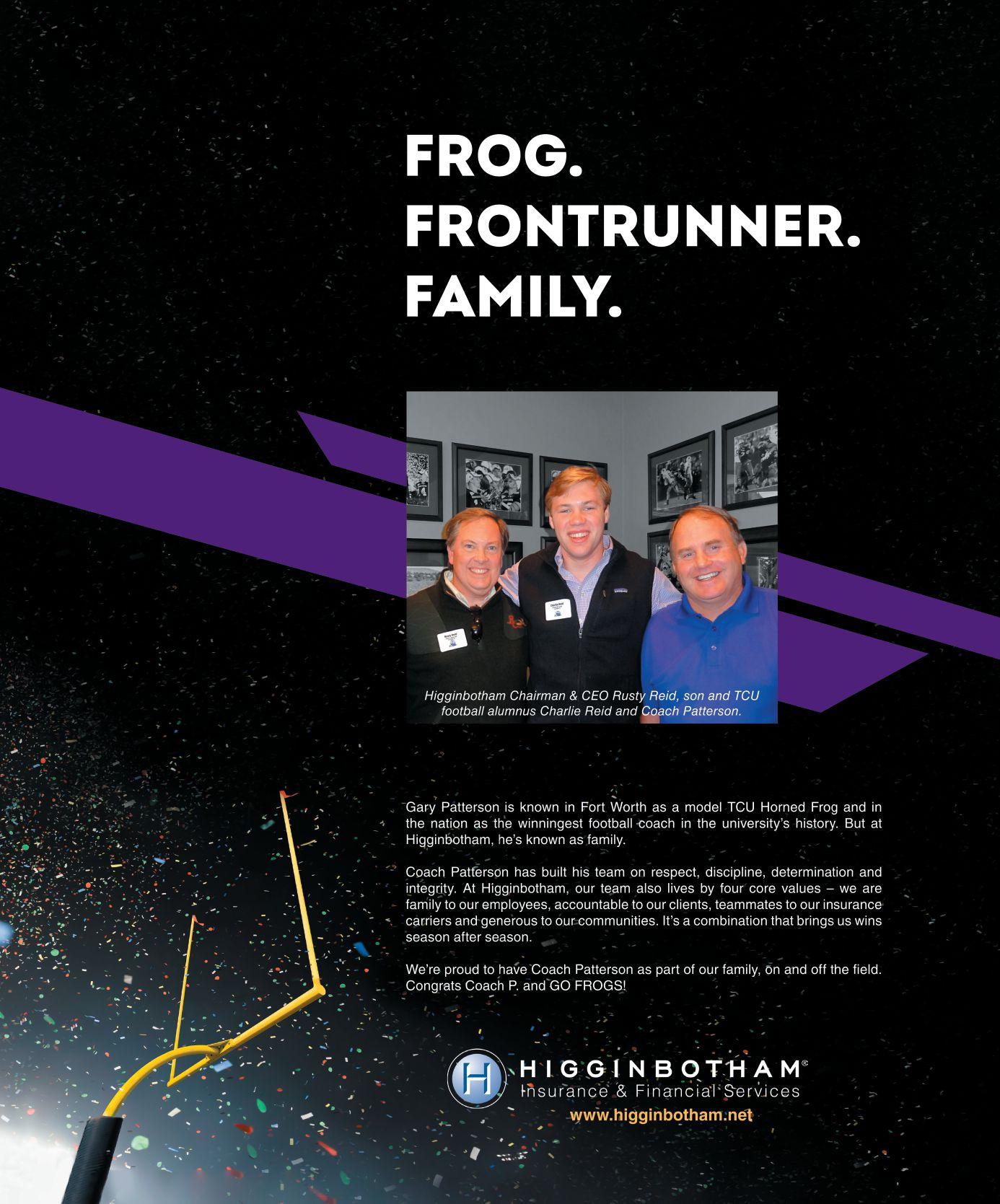

He’s racked up a boatload of awards, bowl victories, and nearly 200 wins, but Gary Patterson’s proudest accomplishment isn’t a number.
BY TYLER HICKS
Exhausted, sweat-drenched, embattled, and bruised, the players filed into the locker room at halftime. You can see the sadness on their faces, the kind of sadness you expect to see from a team near defeat. The score was 31-0, and all signs are pointing to a resounding Alamo Bowl loss for the TCU Horned Frogs.
Hoarse from an evening of screaming, Coach Gary Patterson surveys his nearbroken team. In his then-16 years at the helm of the Horned Frogs, Patterson had built a stellar reputation. He had won a Rose Bowl, sent many players to the NFL, sent even more to successful lives, and inched ever closer to a national title. In the process, he established two identities: Gary, the amiable off-the-field presence who could always be counted on for life advice, and Coach P, the intense, loud, game-day persona that could strike fear into opponents and his own players. Gary and Coach P both deserve credit for raising the national profile — and the enrollment — of Texas Christian University. But now, at halftime of the 2016 Alamo Bowl, Coach P’s football team was being utterly embarrassed by the mighty Ducks of Oregon.
He didn’t get mad; he didn’t scream and shout. Instead, as he stood sentinel over 53 young men in their late teens and early
twenties, Patterson talked about family. TCU’s football facility includes a “Bowl Wall”: a chronicle of every bowl game in which the team has ever played. Former players often visit this wall to relive the glory days; current players visit it to see what might be. In the locker room of that brutal bowl game, Patterson wanted his players to think about that wall. He told them to think ahead five, 10, 20 years, to imagine perusing the Bowl Wall with their wives, children, and grandchildren and seeing the 2016 Alamo Bowl forever etched in stone. What did they see, he asked his players. What story were you telling your family? What story do you want to tell your family?
Zarnell Fitch, one of Patterson’s assistant coaches, remembers that halftime speech with near-vivid clarity. He remembers watching the players as, one by one, their eyes lit up. It was like a scene out of “Friday Night Lights,” and Patterson was the iconic Coach Taylor, rousing his players with the kind of emotional call to action that only the best coaches can muster.
“The best part,” Fitch says, “is that his players know this is a legacy he’s built. Coach P was the head coach for so many of the bowl games they see on that wall, and now he’s standing in front of them, asking them to be a part of it, too.”
The speech was a sea change. After listening to their coach talk about the story they could one day tell their families, the Horned Frogs scored 17 points in the third quarter and 14 points in the fourth quarter, tying the game at 31-31. In the first two of three overtimes, the Frogs and the Ducks traded touchdowns and field goals. Then, in a nail-biting, anxiety-inducing third overtime, quarterback Bram Kohlhausen scrambled for an 8-yard touchdown run. With a 47-41 victory, the Horned Frogs laid claim to one of the biggest comebacks in college football history.
That victory is just one highlight in a career full of them for Coach P (see
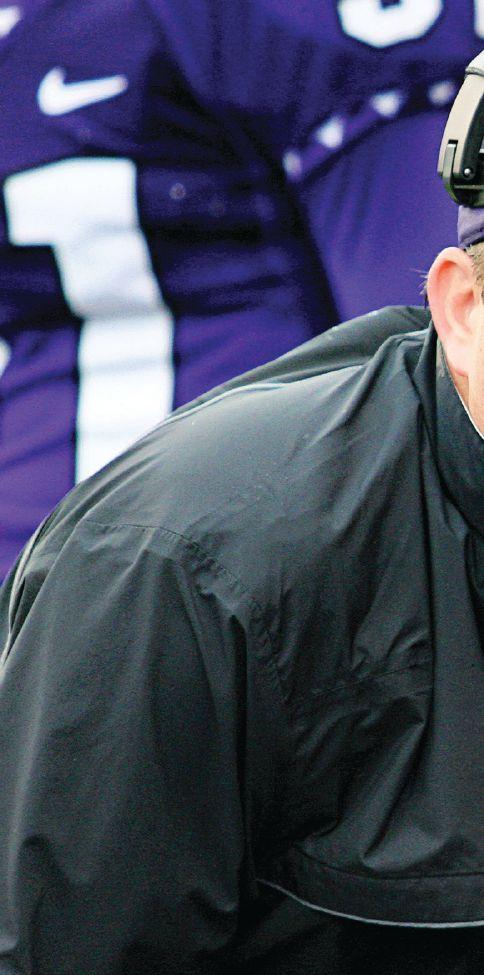
sidebar). He joined the staff as a defensive coordinator in 1998 and was elevated to head coach in 2000. Since then, he’s compiled 172 wins, six conference championships, and a veritable treasure trove of coaching awards. While the last few years have been a far cry from the glory of the Andy Dalton era, Patterson’s two decades at the helm of TCU football have turned the program and the university into a national power. More importantly, he’s sent hundreds of players — whom he calls “my sons” — onto success after college. To



him, that’s the real gift: to work, day in and day out, at building a family. When reached for an interview in early June, Patterson was far away from the lights and allure of a big bowl game. He was miles from the sea of 50,000 purpleclad fans at Amon G. Carter Stadium. It was a Saturday morning, and Patterson was doing yard work. Storms from the previous night left a trail of havoc in Fort Worth, and the coach was picking up the pieces.
The past few weeks hadn’t been easy. A global pandemic altered any hopes he had for a conventional spring football schedule, and the killing of George Floyd incited an anger that was now roiling the nation. In the spring of 2020, he’s been more Gary than Coach P: calm, collected, pensive, and reassuring. He’s had to be.
“I think the boys and I are going to be all right,” he says, cleaning up a lawn strewn with branches. “Look, the sun’s coming out already.”

From Kansas to Cowtown Rozel (pronounced raw-zelle) is a nostoplight, western Kansas town an hour and a half from the setting of Truman Capote’s classic book, In Cold Blood. It’s home to roughly 150 people, all of whom know each other. If you Google “Rozel,” you will find droves of stories and videos about decimating tornadoes. “Rozel dodges tornado destruction — again,” one headline reads. You might learn that in 1897, several Kansas newspapers reported that the town had suddenly “dropped out of sight.” (It hadn’t; someone moved a depot.) Eventually, your Googling will turn up some info about a football coach named Gary Patterson. This is where Patterson was born on Feb. 13, 1960.
“They put a football in my crib,” he says. “I didn’t have much choice in the matter.”
Despite the general dearth of humanity in and around Rozel, Patterson says he grew up surrounded by people: family, friends, teachers, and coaches. It was
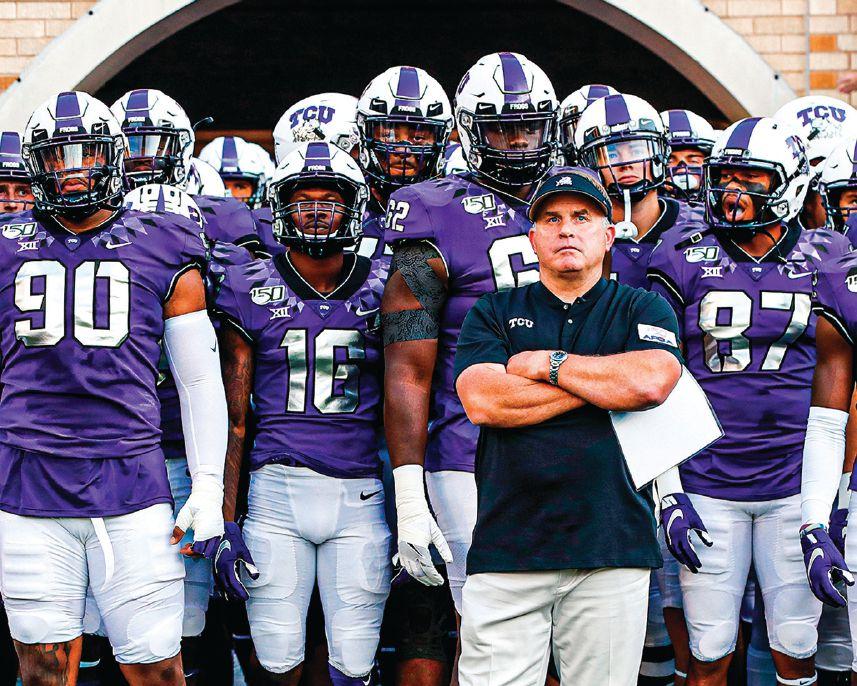
Patterson graduated from K-State with a bachelor’s degree in physical education and then began a 15-year odyssey that started with a grad assistant stint at his alma mater and included an onslaught of one- and twoyear stints in Tennessee, Utah, California, and the Navy.
“It’s hard to stay in one place as a coach,” Patterson says. “I mean, I love Southern California, but you can’t live there for very long on a coach’s salary.”
Yet it isn’t the scenery he misses most about past gigs; it’s the relationships he built — and didn’t build.
“When you move, you gotta help yourself,” he says. “When you stay, you get to help others.”
the kind of town where, for better or for worse, everyone knew everyone’s business. Patterson doesn’t seem to mind it.
“As soon as I cross the state line, I feel comfortable,” he says. “It’s the people that make it that way. Kansas people are unbelievable.”
Patterson’s father spent his days leveling land so farmers could find irrigation. His mother was a nurse. Gary played the guitar.
“I was in a band in sixth grade,” he says proudly. “This was before I ran out my voice by barking at football players all day.”
Yet even as a teenager with rock ’n’ roll dreams, Patterson didn’t dare stray from the family tradition. His uncle Harold is in the football Hall of Fame at the University of Kansas. Uncle Ray played with future Cowboys coach Bill Parcells at Wichita State. So, naturally, Gary Patterson played football. While the 60-year-old coach is now
dwarfed by the defensive giants on his TCU roster, the teenage Patterson was a formidable linebacker, striking fear into the hearts of high school football players across Kansas. His final year on the Pawnee Heights High roster was the final year that the team played 11-man football. After that, Patterson went on to Dodge City Community College, a school he once called “invaluable” in an interview with a Kansas reporter.
“It gave me somewhere to go to school until I knew what I wanted to do,” he said. At the time, Patterson thought he might be a high school coach, perhaps even in Rozel or another small town like his. He filled his days as a Dodge City Conquistador with football practice, football prep and, sometimes, a little guitar. When it came time to move on to a four-year university, the choice seemed obvious: Nearly everyone in his family was a Jayhawk, so why wouldn’t Gary be a Jayhawk, too? But he betrayed them, enrolling at and — worse yet — playing football for the Kansas State Wildcats.
“My uncle was pretty upset for a while,” Patterson admits. Uncle Harold, that is.
It was the guitar that got him his first big gig. It was 1986, and Patterson, then a linebackers coach for UC Davis, was working camps with a guy from Cal Lutheran. The two were decompressing from a day’s work, and Patterson was strumming his guitar. The Cal Lutheran coach took a shine to this amateur country crooner from Kansas, and the two struck up a conversation.
“Would you be interested in becoming a defensive coordinator?” the Cal coach wondered.
“Yes,” Patterson said. “Yes, I would.”
It wouldn’t be the first time that networking earned Patterson a job at a school that was slightly bigger, slightly more prestigious. Two of Patterson’s early mentors and friends were Dennis Franchione and Jerry Kill, both fellow Kansas boys.
Franchione and Kill shared multiple stages with Patterson: Kill currently serves as an assistant on Patterson’s staff and also served as his best man when the ball coach wed in 2004. Franchione gave Patterson his most high-profile gig to date when he stole him away from the Navy and enlisted his defensive talents in New Mexico. It was also Franchione who brought Patterson along for the ride when a school from Fort Worth needed a new man at the helm.
The year was 1998, and the TCU Horned Frogs had just endured another abysmal 1-10 season in a series of decades filled with abysmal seasons. Franchione was tabbed for the head coaching vacancy, and Patterson
became defensive coordinator. The former would turn the program around; Patterson would turn them into a player.
“Looking back, I think it was time to settle down and stay somewhere for a while,” Patterson says. “It was time to put down roots.”
The 2011 Rose Bowl was the chance for TCU football to, once and for all, declare that it was no fluke. We’ve arrived, a victory would say, and we’re here to stay.
There were 94,118 people in attendance, including Gary Patterson’s mom. For the last decade, Mrs. Patterson had watched from Rozel as her son turned the Horned Frogs into a national powerhouse. This game was the culmination of 10 years of 60-hour workweeks in Fort Worth, three decades of sleepless nights and painfully early mornings, and untold hours glued to the TV
in tape rooms across America, dissecting every formation and snap.
The last 10 years included plenty of highlights, but this game could trump them all. More importantly, Gary had built a family in Fort Worth — a family he never wants to let down.
He wed his wife Kelsey in 2004 and has three children — and that's just his immediate family.
While millions of Americans could turn on their televisions on any given Saturday and find Coach P tearing into a defender for missing a tackle or a lineman for botching a block, few people saw the man’s softer side.
“We joke that I’m the nice one,” Kelsey Patterson says. “But Gary’s not always the guy you see running up and down the sidelines. He loves the boys.”
“It’s not uncommon for a freshman to say, ‘I don’t like this guy,’” says Mark Cohen, TCU’s director of athletic media relations.
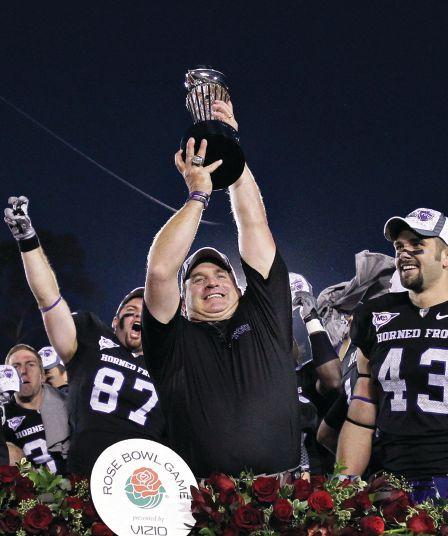
It’s impossible to beat the Rose Bowl, but the granddaddy of ‘em all isn’t the only great game of Patterson’s tenure thus far. Here are four others.
‘05
It was the start of the season, and the Horned Frogs traveled to Norman to face the Sooners.
The OU squad was ranked No. 7 in the nation and was led by a running back named Adrian Peterson. It didn’t matter:
The Horned Frogs shocked Oklahoma, beating the Sooners 17-10 in their own backyard. The game remains one of TCU’s biggest upsets ever, and Coach P pulled it off with a crew that he recruited.
Led by the nefarious offensive wizard Mike Leach, the Red Raiders were heavily favored to trounce Patterson’s Frogs. Texas Tech typically ran up 50 points on their opponents, but in this game, they scored only 3. After the game, Leach told reporters that his team simply played poorly, to which Patterson retorted, “People have been underselling our kids for years,” he snapped. “All they ever want to do is talk about the Big 12. We’re not the Big 12 — just a Texas team playing with Texas players — and beating every Big 12 team that shows up on [our] schedule.” It would be years before TCU got the respect Patterson believed they always deserved, and they, too, would eventually join the Big 12.
For the first time ever, ESPN’s College GameDay came to Cowtown. While the No. 4 Frogs were favored over the No. 16-ranked Utah Utes, some naysayers were still doubting if this school from the Mountain West Conference was worthy of national attention. Patterson’s team responded by putting up 55 points in a dramatic statement win played in front of millions of viewers.
The sports media loved to hype up the rivalry between these two upstart Texas teams, but Patterson has always downplayed any animosity between the programs. Nevertheless, it must have felt nice to exact some sweet revenge on the No. 7-ranked Bears, who had stunned the Horned Frogs with a dramatic come-from-behind victory the year before. This time, the No. 15 Frogs upset the Bears and finished the year with their best record yet since joining the Big 12.
‘He’s intense; he yells too much.’ Their second year, they’ll say, ‘He’s not too bad.’ By years three and four, they can’t imagine life without Coach in their corner. They know he has their backs.”
At the start of every coaches meeting, be it for a scrimmage or the Rose Bowl, Patterson will ask each coach how the players are doing. How are their grades, he’ll ask. Are we making sure he’s keeping up in class? What about his family?
In his three years covering Horned Frog football, Star-Telegram reporter Drew Davidson has mostly seen Coach P, the seemingly irascible head coach, stalking the sidelines.
“He’s a tough coach, no question,” Davidson says. “He’s reluctant to praise, and I’ve seen him light into guys.”
But Davidson has met Gary, too.
“It’s clear he cares about these guys,” he says. “You don’t get to be somewhere 20 years without building relationships and trust.”
Like all great coaches, Patterson built relationships before the players ever set foot on campus. He doesn’t like to talk recruiting strategy (“He plays those cards pretty close to the chest,” Cohen says), but it appears he has a soft spot for players who are overlooked. They might be athletes with a lot of raw potential, or they might be guys from small towns like his. Zarnell Fitch was one of those guys.
Spencer, Oklahoma, may not be as small as Rozel, Kansas, but it’s still the kind of town you can drive through without noticing it. When Fitch was growing up in Spencer, it seemed like everyone knew Coach Gary Patterson. Patterson was the guy who recruited Spencer running back Ronald Moore back in the 1980s, and since Moore made it to the NFL, both he and Patterson
The First Lady of TCU Football has made her mark on Fort Worth, too.

“KELSEY IS ONE OF THE SECRETS TO OUR SUCCESS,”
GARY SAYS. “Ask any of the players: She’s the nice one. She’s the good guy.”
Kelsey grew up in Fort Worth, but she wasn’t always a fan of the city.
“There was nothing to do when I grew up here,” she says. “Maybe you went to the Stockyards, but that was it.”
By her own admission, she didn’t go to any TCU football games growing up. After enrolling at college at UT Austin, she figured she might stay in the capital for a while. But one job led to another, and eventually Kelsey returned to her hometown to be the director of marketing at the Fort Worth Zoo. That’s how she eventually met Gary.
A guy in the athletic department was married to one of Kelsey’s coworkers, and one day, Kelsey’s colleague started talking about football.
“You need to meet our head coach,” she said.
“I told her, ‘This feels like a setup,’ and it was,” Kelsey says. “And the rest, I guess, is history.”
The happy couple wed in 2004. Since then, Kelsey's become like an honorary mother to the TCU football team.
“Everybody loves Mrs. P,” says Zarnell Fitch, a former TCU player and now the team’s D-Line coach. “When we were players, I don’t know if we understood why she would love a guy that yelled at us all the time. But she does.”
And she loves the community, too.
“Whenever I talk to the players, I always focus on embracing the community,” she says. “Gary didn’t get to build relationships in his earlier jobs, but now that he’s been here so long, we want to make the most of our time here.”
Kelsey’s passion is education, which she focuses on through her and Gary’s foundation (see “Laying a Foundation”). And when she’s not busy leading that organization, she’s relishing her role as “Mrs. P,” the one players know as “the good guy.” Each year, scores of graduates return to meet the current crop of players and hang with the Pattersons.
“It’s always amazing to have the old guys meet the new guys and see the impact the program can make,” she says. “It’s my favorite day of the year.”
remain household names decades later.
“Gary’s name and what he did for Ronald was big in my community,” Fitch says. “I thought, ‘Hey, if I want to make it to the NFL, maybe he’s my guy.’”
Yet Fitch decided to enroll at Tennessee. A few weeks into his first college camp, he knew he made a mistake.
“I should’ve picked TCU,” he says. “It’s where I was supposed to be.”
Fitch left Tennessee, played JUCO football, and ultimately made his way onto Patterson’s roster in Fort Worth. All those years later, Patterson had remembered that Fitch was interested in coaching.
“I told him that when he was recruiting me,” Fitch says, still in disbelief. “So, there I am, end of my senior year, and Coach asks me, ‘Hey, what are you doing next year?’”
Fitch joined Patterson’s staff as a grad assistant, and now, after years of indoor, arena, and NFL football, Fitch has once again returned to Fort Worth. Four years ago, he became TCU’s D-Line coach.
“Now, I get to be the one having those conversations in small towns, helping Coach P help guys like me,” Fitch says. “I get to be the guy bringing them the dream, telling them they can be a part of this legacy, too.”
That legacy extends far beyond the football field. In addition to The Gary Patterson Foundation, the ball coach has helped TCU raise its national standing. In 2000, the university received a little more than 5,000 applications for admission. Twenty years later, they consistently rake in 20,000 apps. The number of applications saw a sizable boost in the years after the Rose Bowl as, for the first time, people from the far west began seeing Fort Worth as a viable college destination.
“We joke that TCU now stands for Texas California University,” Cohen says. “But it’s kind of true: Apart from Texas, the school’s

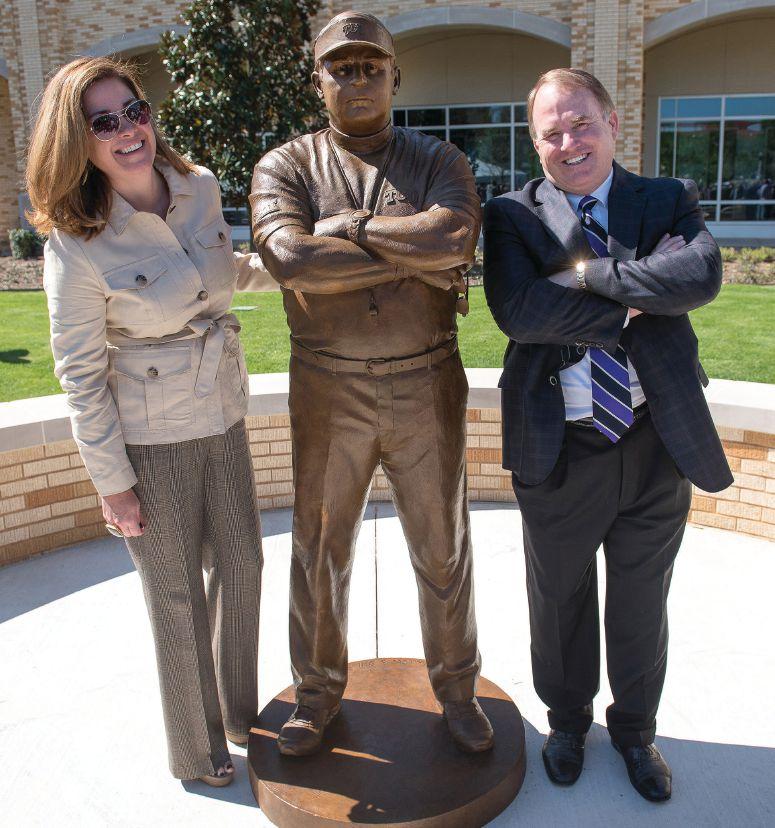


points, Patterson thanked, in order, his players, his coaches, and his family.
“People say, ‘Well, why are you so driven?’” Patterson reflected after the game. “You’re driven because you have parents that drove you, and you want to make sure that you paid them back for all the hard work they did.”
biggest draw is California.”
And it was California where Patterson cemented his status as a TCU icon.
The 2010 TCU football team was the stuff of legends, but even though they went 12-0 on the way to the Rose Bowl, fans and pundits still doubted if they were the real deal. No. 4 Wisconsin was their toughest test of the season, and Coach P’s mom wasn’t about to miss it. She, her daughter, and her son-in-law drove 20 hours from Rozel to Pasadena to see Gary and the Frogs in action.
“They’re very proud of Gary,” Kelsey told reporter Gil LeBreton around the time of the Rose Bowl. “He takes a lot of pride in making [his family] proud of him.”
So, when TCU beat Wisconsin by two
Years later, it was Gary who traveled hundreds of miles to see his mom: She was dying, and Patterson wanted to see her one last time. He would have stayed a couple of days, he told reporters, but his mom knew that he had a game coming up.
“She was one of those [who said], ‘Now, I don’t want you to get beat by Texas Tech,’” Patterson recalled. She wanted him back with his boys, so she told him to go home to Fort Worth.
Standing outside Schollmaier Arena is a statue Gary Patterson never wanted to exist — a statue of him.
“Can it wait until I’ve stopped coaching?” he asked the employees in the athletic department. The answer, ultimately, was “No.” A donor was dying, and it was one of his last wishes to see Coach P embronzed alongside Davey O’Brien and Dutch Meyer. So, the statue went up.
“Well at least I don’t have to look at it,
because I’m not over there that often,” Patterson told colleagues at the time. The statue soon became the butt of an ongoing joke in the athletic department.
“The athletic director’s office is right behind the statue,” Cohen says. “So, he’s got a great view of Coach P’s rear end.”
Students love the statue. They take selfies with it, and when it rains, they put an umbrella over its head. They love the real-life Patterson, too. Patterson has become something of a celebrity on campus and in Fort Worth. The few fans that weren’t won over by the Rose Bowl were finally wooed when TCU joined the Big 12 in 2012. Now, Patterson is instantly recognized and flagged down whenever he is on campus or out and about in the community. This superstar status would never get to his head, of course. Nor would he let it interfere with his family life. Every Thursday of the regular season after the game plan is complete and the practices are over, he’ll drive to Railhead Smokehouse to record The Gary Patterson Radio Show, then drive to Del Frisco’s for his date night with Kelsey.
“He’s a nice, friendly guy,” a maître d’ confirms. “Always happy to be here.”
Lately, however, few people have been around to flag down Coach P. No one has been there to shield the Patterson statue from rain, either. COVID-19 has shut down Fort Worth and shut in Patterson’s football players. Patterson has had more down time than usual, and a few weeks into quarantine, the coach got an idea. He picked up his guitar, grabbed a pen and paper, and wrote a song.
The tune he crafted, titled “Take a Step Back,” is about a lot of things. It’s about community. It’s about reminding yourself to watch out for the guy next to you and to have your neighbor’s back. But most of all, it’s about family. The music video, released in early June, is a two-minute, 19-second celebration of all things TCU. The camera zooms across a campus brimming with purple and cheer, and in between shots of wild fans, Gatorade dumps, and touchdowns aplenty, there is Gary: strumming his guitar, belting his heart out, and reminding you how important family is.
He doesn’t talk much about games or stats or any kind of football minutiae, but he can talk about music all day.
“It’s always been my way to relax,” he says. “Lately, I think we’ve all been needing our own ways to relax a little bit.”
In addition to writing some songs, Patterson has taken this time to think. He thinks about his “sons,” past and present, and how they’re doing amidst the pandemic and weeks of protests. He talks to them often, but not as often as he would like. That’s why, when interviewed in June, Patterson is eagerly counting down the days to the first fall practice. He longs to be back on the field, to keep chasing that elusive national title. Things like 200 wins and 20 years are great, he says, but the job isn’t done until he brings home the ultimate crown.
“As soon as you think you’ve arrived, you need to get out,” he says.
That’s why he’s itching for fall camp, no
matter what it looks like. When it comes, he’ll wake up, and it’ll still be dark outside. He’ll drive to campus as the sun rises, and once there, he’ll meet with his boys. Then, the family will get to work.

Gary and Kelsey have already changed the lives of grade-school students across Cowtown.
IN THE 15 YEARS OF TOWN- AND JOB-HOPPING, PATTERSON DREAMED OF SETTLING DOWN. Finding a head coaching job wasn’t as much about the high salary as it was about finding a place he could call his own. So, when he finally found that place, he wanted to help make it better.
“I have a job because of kids, so I wanted a platform to give back to kids and the community,” he says.
The same year Patterson assumed the role of head coach, he launched The Gary Patterson Foundation, an organization devoted to equity in education. As its mission statement says, the foundation strives to improve schools “one program at a time, one campus at a time, and one child at a time.” In Fort Worth, they have their work cut out for them.
One of the foundation’s key goals is to get the city’s libraries up to standard. Currently, 84% of Fort Worth’s public schools have libraries that fall below state
standards. The Launch into Literacy campaign aims to fix that problem. Launched in 2018, the campaign raised more than $500,000 for library improvement, a far cry from the foundation’s humble beginnings.
“I think our first fundraiser was for the Red Cross, and we ended up raising around $5,000,” says Kelsey Patterson. While the organization bears her husband’s name, even Coach P will admit that his wife is the brains behind the operation.
“With Coach’s hours, he didn’t have enough time to develop it,” Kelsey says. “I took it over, and the first few years were getting our feet wet, seeing what worked, what didn’t. It took us a few years to home in on what matched our personality.”
The Super Bowl was their breakthrough. In 2011, the 45th Big Game came to Arlington, and the NFL tried out a philanthropy initiative called SLANT 45 (Service Learning Adventures in North Texas).
The Gary Patterson Foundation
partnered with George C. Clarke Elementary for a servicelearning project, and the two stayed connected long after the Packers beat the Steelers in Jerry World.
“They became like our test kitchen,” Kelsey says, and through literacy and after-school programs, the foundation determined what worked and what didn’t for students at Clarke and beyond. In quarantine, the Pattersons had more time to work on their organization. But Kelsey is tightlipped about what lies ahead for the foundation, other than to hint that some major news may be dropping soon.
“We’re going to try to keep raising the bar,” Kelsey says. “We feel like we have the opportunity to really move the needle on some issues in Fort Worth.”












The garage door and garage door operator brand women choose and recommend the most is the Overhead Door™ Brand. We have won the Women’s Choice Award for 9 years in a row. Overhead Door Company of Fort Worth™ is a woman-owned business and she is a proud TCU Alumni! Go Horned Frogs! Serving Our Community For Over 50 years Contact us today for Service,


or email
By Brian Kendall
While our top teachers come from different schools — public and private — different areas of town — urban districts and rural areas — and different backgrounds and experiences, they all share an immense passion for what they do.
At some point, during each interview, every teacher said they couldn’t imagine doing anything else. Though some previously worked in industries that would lead to more financial security, none had positions as personally rewarding as being an educator.
As the magazine has done in years past, we’re honoring five private and five public school teachers. We begin this process by asking our readers to submit votes through our website, fwtx.com, where students, parents, fellow teachers, and staff members can explain why their nominee is deserving and dote on their favorite teacher. After collecting the nominations, we vet the final list through the teachers’ headmasters and principals.







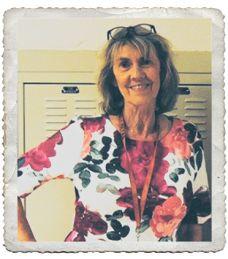


The amount a student changes through a school year directly correlates with the age of the student — a junior in high school, for instance, won’t go through nearly as many changes as a first grader. Witnessing this growth in youngsters is what Jessica Brooks of Walnut Grove Elementary School enjoys most about teaching. “I love seeing the drastic difference socially, emotionally, academically, and even physically — they’re so much taller and bigger than the 5-year-olds and 6-year-olds who came to me in August,” Jessica says. “Just the fact that in nine months, their whole world changes and changes for the better is really amazing to witness and play a part in.”
At Walnut Grove, they embrace cooperative learning, an educational approach designed by learning guru Dr. Spencer Kagan. The idea is to break students of individual learning and, instead, work in groups to solve academic problems. Students become teachers, explaining and assisting classmates who might not fully grasp course material. “It’s all about team building,” Jessica says. “It boosts children’s confidence because they’re getting encouragement from their peers, which is huge when you’re a 6-year-old.”
Senior superlative: Most likely to break into song and dance in the classroom
Favorite song: “Treat You Better,” by Shawn Mendes
Favorite quote: “I can do all things through Christ who strengthens me.” ‒Philippians 4:13
Kenyail Carr’s resume is as impressive as it gets: graduating second in her class at Grand Prairie High School, playing softball at the University of Tennessee, graduating with honors with a degree in engineering, and being named one of FWISD’s Teachers of the Year in 2019. But perhaps her greatest achievement is securing a 100% pass rate from her students for the state standardized STAAR exam for the past two years at I.M. Terrell Academy. Her students have also sported a 37% mastery of algebra — some of these students, Carr says, had never passed the exam before.
Carr teaches algebra and geometry via the STEM program, which is a nontraditional program that students must apply to attend. The program integrates science, technology, engineering, and mathematics and focuses on the skills necessary to think critically and solve problems.
On teaching via STEM, Carr says, “The students come out as well-rounded individuals. Their perspective is more of a global perspective when they leave our school. And they’re prepared to go in multiple directions no matter what path they choose. Whether it’s college or career, I think they’re ready for both.”
Senior superlative: Most likely to impact those around me to reach their full potential
Favorite song: “Smile,” by Tasha Cobbs
Favorite quote: “I can do all things through Christ who strengthens me.” ‒
Philippians 4:13
The 17 global goals adopted by the United Nations include such objectives as ending poverty, providing quality education, and ending global climate change. The goals are intended to be achieved by 2030, and Ryan Churchward of Trinity Valley School is pulling his weight to achieve them.
A sixth grade global studies teacher, which introduces students to other cultures around the world, Ryan teaches his class through the lens of the global goals. “For instance, when we talk about Africa, we’ll talk about poverty and famine and why it exists there. But we’ll also talk about the continent having some of the world’s largest growing economies. It’s important for students to know that these problems are felt worldwide.”
Growing up in the cornfields of Springfield, Ohio, Ryan never went on an airplane until his sophomore year of high school when he went on a mission trip to China. “I can’t say I had a whole lot of empathy for other cultures growing up because I wasn’t exposed to it,” he says.
“My goal is to help my students understand what the world is like outside of the little bubble they live in,” Ryan says. “I want students to love diversity, love people who are different from them, and understand the value of other cultures.”
Senior superlative: Most likely to uproot and move to another country just because*
Favorite song: “Fix You,” by Coldplay Favorite quote: “Do what you can to preach the gospel. When necessary, use words.” – Saint Francis
*Ryan doesn’t plan on going anywhere anytime soon because he loves where he’s at and what he does.
According to Brittany Clonch, a pre-K teacher at Como Elementary School, something teachers always need to ask themselves is “What is your why?”
To find the reason for taking on the responsibility of being an educator.
“Initially, my ‘why’ was ‘I need a job for my kids,’” Brittany says. “But my why has shifted. I’ve done a lot of training in this new thing called TBRI (trustbased relational intervention), which is finding that childhood adversity is a huge indicator of kids who are going to be predisposed to misdiagnosis of ADHD and things like that. So, my why has shifted to childhood adversity and those kids within the demographic that I teach.”
TBRI recognizes the important role complex development trauma plays in a child’s education and trains caregivers to provide effective support. According to the Texas Tribune, which quoted the Texas Education Agency’s annual Texas Academic performance report, 57.3% of the students who attend Como Elementary are at risk of dropping out before graduating high school. With this new understanding and training under her belt, Brittany is one of the many who will help reverse this trend.
“As a teacher, you need to have a loving side to help students find their selfworth and their authentic self,” Brittany says. “And you need to provide that safe space for them.”
Senior superlative: Most likely to speak her mind
Favorite song: “Sounds of Silence,” by Simon & Garfunkel
Favorite quote: “Fear is the opposite of joy.” – Anonymous
Brad DeBorde of the Oakridge School comes from a family of teachers. His father taught physical education to special needs children, and his mother was the first female athletic director of DeSoto ISD. So, it seemed inevitable that Brad would someday demand the attention of students at the front of a classroom. Going with theater as his subject of choice was his way of rebelling, Brad jokes.
Yet, despite his legacy and predisposition to being an educator, Brad sees a lot of parallels between himself and his students. They’re all growing together. “Those first five years as a teacher, you’re a young punk and think you know everything,” Brad says. “And then you settle in and realize ‘Oh, teaching is also a lifelong learning position.’ So, like your students, you grow and you mature.”
In addition to theater, Brad is also a writer of high fantasy novels for young adults and teaches a seminar course on independent publishing. “My students spend half the semester writing a novel or novella, and [I] teach them how to self-publish or find literary agents. We’ve actually had about 12 students published now. It’s kinda cool that a kid can enter a college interview and say, ‘Hey, here’s my novel.’”
Senior superlative: Most talented
Favorite song: “The Dance,” by Garth Brooks
Favorite quote: “That’s what dads do.”
– Brad’s dad
Happy students learn. This is the mantra of Jennifer Gilmore, a second grade teacher at Bruce Shulkey Elementary School. She goes out of her way to make her students smile, whether it’s braiding students’ hair before the morning Pledge of Allegiance or promoting an environment that gets students up, moving, and interacting.
“I want people to talk,” Jennifer says. “This is the best way to learn the English language.”
Appropriately, it was a second grade teacher, Ms. Pile, who inspired Jennifer to become an educator — against the advice of her mother, mind you.
Ms. Pile was trying to explain temperature fluctuations throughout the day — why it’s one temperature in the morning and another in the afternoon.
“I remember thinking, I don’t like how she’s explaining that,” Jennifer says. “I could do it better. So, I raised my hand and offered to do it better. She smirked at me, gave me the chalk, and said, ‘Come up here and do it.’ So, I explained it to the whole class, why the temperatures change. She looked at me and said, ‘You should be a teacher.’
“She could’ve been offended. But she saw there’s something valuable in that ability to explain things to others.”
Senior superlative: Most likely to succeed
Favorite song: “Hey, Soul Sister,” by Train
Favorite quote: “Anything can be accomplished with a lofty attitude.” –Aunt Barbara
When students first enter Kathryn McBroom’s chemistry class, she knows she’s working with a clean slate. Unlike math and English, where basic principles are applied throughout, students arrive to a chemistry class with very little knowledge about the subject matter. This makes Kathryn’s job both exciting and challenging.
“At the beginning of the year, I show them where we’re headed, and I give them a crazy problem. They think ‘There’s no way,’” Kathryn says. “But by the end, they’re speaking this whole new language. They’re doing stoichiometry problems and writing equations.”
While Kathryn might have to tweak her teaching method, thanks to COVID-19, she’s steadfast in her belief that community breeds a positive learning environment.
“I think all meaningful learning, whether it’s in chemistry, English, or in the workplace, takes place in communities,” Kathryn says. “I’m not sure how it’s going to work next year with all the COVID stuff going on, but we sit in learning groups. It could be groups of two, 10, or whatever. It’s up to the students.”
Unlike the rows of desks facing the front of the class that have become the typical diagram of classroom seating, Kathryn has flexible seating that allows students to sit where they please and with whom they please.
“It’s my favorite thing to see them put their cell phones away and hear them talk about chemistry,” Kathryn says. “To hear 17-year-olds talk about chemistry is super exciting to me.”
Senior superlative: Most likely to go back to school
Favorite song: “Seasons of Love,” from “Rent”
Favorite quote: “To love another person is to see the face of God.” – Victor Hugo, Les Misérables
Some people are born educators. The classroom is a place, even as early as kindergarten, where they feel at home.
Lynne Pendergrass, a first grade teacher at All Saints Episcopal School, is one such person. Whether as a student or a teacher — she just received a PhD in curriculum instruction from the University of North Texas — Lynne’s life has been nothing but school since she could remember.
“I can’t ever remember wanting to be anything else,” Lynne says about being teacher. “I was one of those kids who used to play teacher with a chalkboard we had in our basement.”
While there’s little doubt Lynne at one point in her life was what some envious students would call a teacher’s pet, it’s important to her as an educator to refrain from playing favorites. “I had a parent of a student once tell me that her child said, ‘Mom, Ms. Pendergrass is really fair. She loves us all, and she treats us fairly,’” Lynne says. “I do. I love them all. They don’t all need the same thing, but I think at the end of the day, they understand what I’m giving them is what they need, and I’m going to treat them all fairly. I’ll never have a favorite student.”
Senior superlative: Most likely to ask questions
Favorite song: “Take It Easy” by The Eagles
Favorite quote: “I can do all things through Christ who strengthens me.” ‒Philippians 4:13
It’s an unfortunate and terrible fact: Not all students have the same opportunities. While the majority of those attending private schools and coming from affluent families are predestined to attend college, those who come from lower-income families will ultimately have a more difficult path. The AVID program (Advancement Via Individual Determination) is a college preparatory course for first-generation, low-income students.
“Kids always say, ‘Yeah, I’m going to go to college,’” Vicky Robertson, who teaches AVID at Polytechnic High School, says. “They say that from the time they’re in elementary school. But they don’t know what it’s going to take.”
Vicky, who in addition to teaching at Polytechnic was also a third-generation attendee of the school, challenges her students in an effort to develop their college preparedness. And it’s not just SAT preps and learning the admissions process (though that’s part of the curriculum, too). The course also implements Socratic methods of learning and emphasizes organization and selfexploration.
“I love my kids,” Vicky says. “They are some of the hardest-working people. Their parents are good, hardworking people. I wouldn’t want to be anywhere else.”
Senior superlative: Most likely to come back to her community
Favorite song: “We Are Family,” by Sister Sledge
Favorite quote: “There are two ways to be fooled. One is to believe what is not true; the other is to refuse to accept what is true.”
– Soren
Kierkegaard
studies, Southwest Christian
In the Marine Corp from 2000 to 2008, Chris Swinney maintains that he was supposed to be a pilot. “[Teaching] was never part of the plan,” Chris says. “But after I got deployed, came back home, and started working with students, I realized this is what I loved.”
Chris loves using the classic metaphor “fork in the road” to describe both his journey to becoming a teacher and the challenges his students face on a daily basis. Chris’ fork came when Southwest Christian School offered him a teaching job despite the fact that he still required some schooling. The two came to a mutual agreement, and Chris left the Marines to become a full-time Bible teacher and praise leader at the school. According to Chris, he’s taught a little bit of everything as far as Bible is concerned, and he leads a full band (guitar, bass, keys, drums, etc.) that leads the school each week in chapel.
“I never had this plan,” Chris says. “I see every student as having a fork in the road, and they’re trying to figure out which direction to go. I’m sure every person has had those experiences. I just found a longing, a desire, to want to help students see that fork in the road clearly.”
Senior superlative: Most dependable
Favorite song: “Graves into Gardens,” by Elevation Worship
Favorite quote: “Let all that you do be done in love.” ‒ 1 Corinthians 16:14
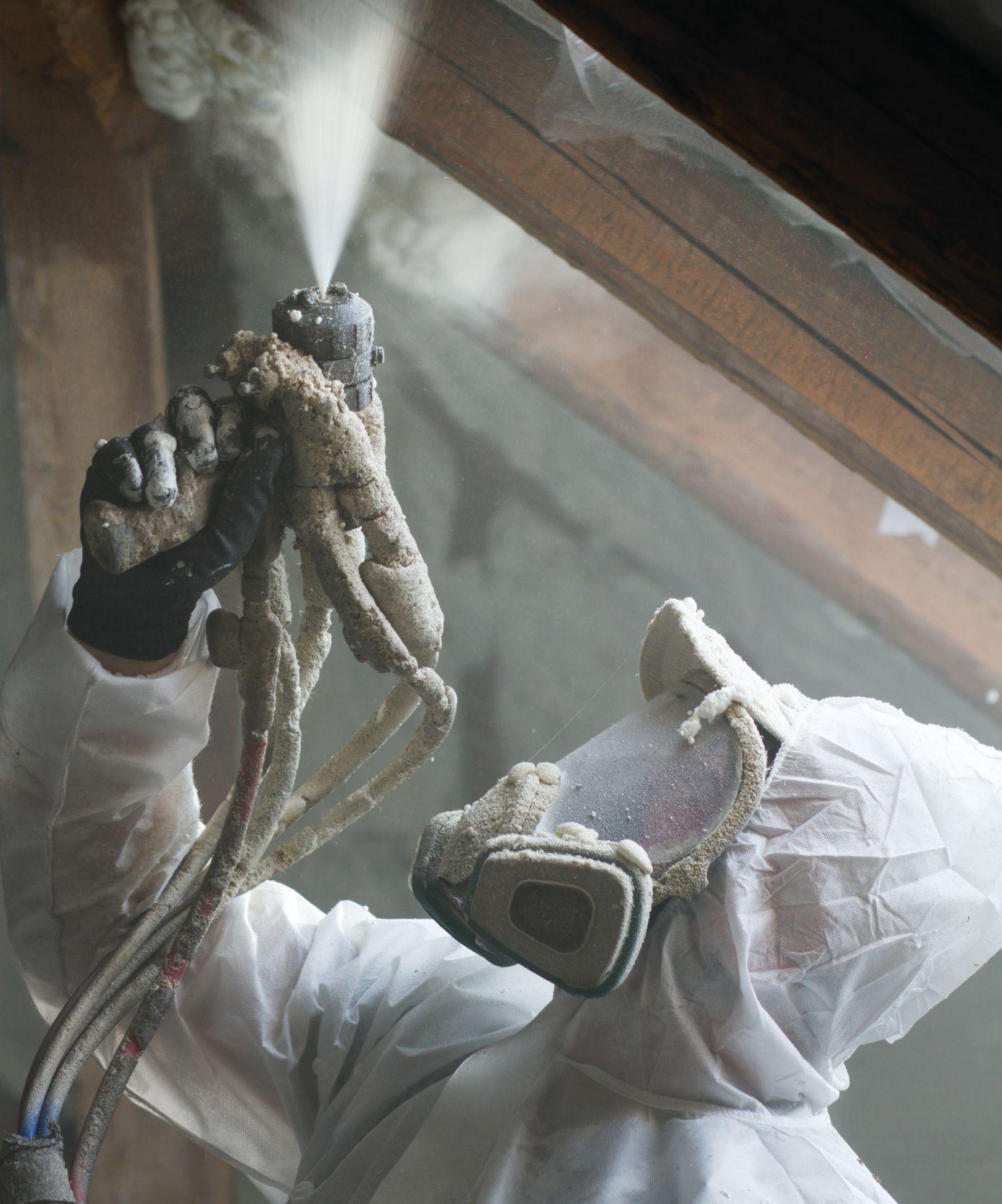

» Each year, thousands of parents and students begin their hunt for the perfect school. Filling out application after application, setting up interviews, and making multiple visits to schools can be a daunting task. Where will my child excel academically, grow personally, and truly enjoy learning?
Whether you’re seeking a school for a specific teaching methodology or prefer that your child learn in a religious environment at a school that shares your family’s vision, the search can seem overwhelming. Things can get especially tricky if you are enrolling more than one child into private school or college — one size doesn’t fit all, and it’s difficult to find just the right match. Extensive research is often required, and critical questions will arise regarding tuition costs, test assessments, personal interviews, and the application process, among others. When it comes down to it, choosing a school for your child is no easy task, to say the least.
On the following pages, you will find a comprehensive list of private schools, colleges, and graduate programs in the area. From fine arts academies and faith-based schools to Montessori academies and schools focused on accelerated learning for the gifted and talented, the 2020 School Guide gives parents an in-depth look at each school, including student-to-teacher ratio, cost of tuition, and enrollment.
We hope you will find this quick reference to the area’s schools and colleges helpful as you explore the possibilities of your child’s education.

Saints Catholic School Fort Worth / 817.624.2670 / ascsfw.org
All Saints’ Episcopal School Fort Worth / 817.560.5700 / aseschool.org
Anderson Private School for the Gifted, Talented and Creative / Fort Worth / 817.448.8484 / andersonschool.net
Arlington Faith Academy / Arlington 817.483.0119 ext. 307 / faithassemblyarlington.com
Bethesda Christian School Fort Worth / 817.281.6446 / bcsfw.org
/ burlesonadventistschool.net
817.572.0081 / 817.572.0081 / burtonacademy.org
/ 817.332.3351 / calvaryacademy.com
High School Fort Worth / 817.926.1745 /
/
Créme De La Créme
/ cremedelacreme.com
/ COLschool.org
/ ekklesiachristianschool.org



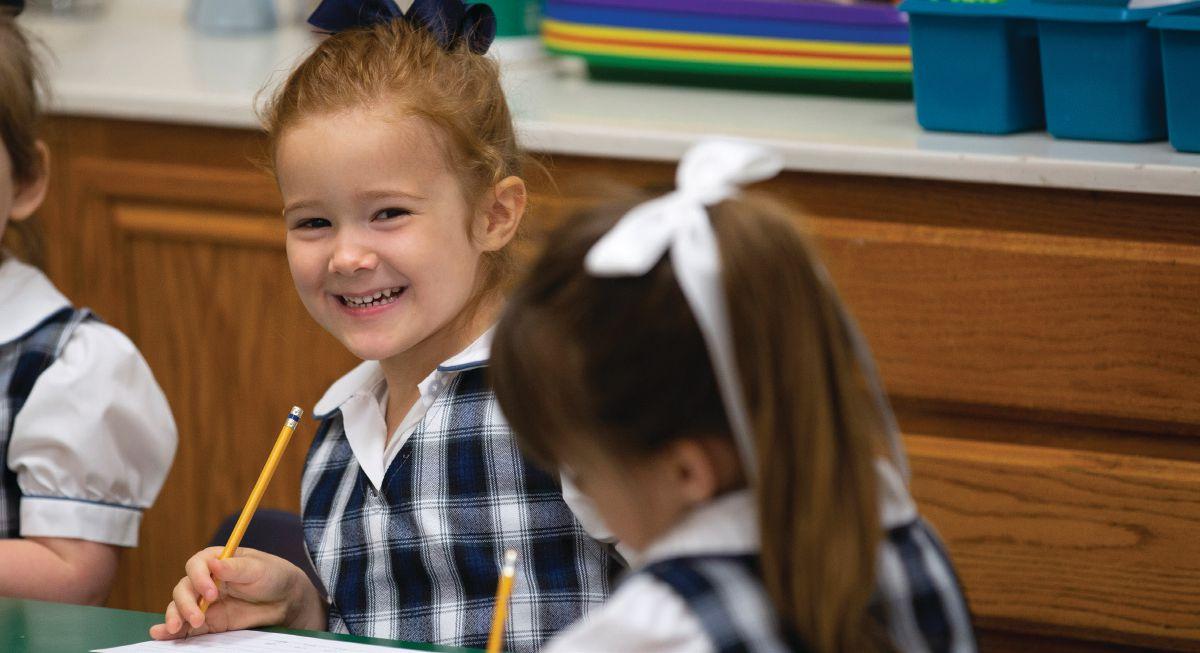

Worth Montessori School
Worth / 817.294.9850 / fortworthmontessori.com
Fusion Academy Southlake Southlake / 817.416.0306 / fusionsouthlake.com
/ 817.557.3399 / graceprep.org
/817.422.1605 / grapevinefaith.com
/
/ libertychristian.com


Lady of Victory Catholic School Fort Worth / 817.924.5123 / olvfw.com
Pantego Christian Academy Arlington / Mansfield / 817.460.3315 / pantego.com
Park Row Christian Academy Arlington / 817.277.1021 / parkrowchristian.net
School of Bedford Bedford / 817.545.5485 / primrosebedford.com
Primrose School of Columbus Trail Fort Worth / 817.423.4000 / primrosecolumbustrail.com
Primrose
/ 817.236.6760 / primroseeagleranch.com
Primrose School of Grand Peninsula Grand Prairie / 817.477.0077 / primrosegrandpeninsula.com
Primrose School of Hall Johnson Grapevine /
/ primrosehalljohnson.com
Primrose School at Heritage Keller / 817.741.5044 / primroseheritage.com
Primrose School at Hidden Lakes Southlake / 817.337.4666 / primrosehiddenlakes.com
Primrose School of Keller Keller / 817.337.0717 / primrosekeller.com
Primrose School of Mid-Cities Hurst / 817.485.8993 / primrosemidcities.com
Primrose School of NE Green Oaks Arlington / 817.543.2626 / primrosenegreenoaks.com
Primrose School of Parkwood Hill Fort Worth / 817.281.5322 / primroseparkwoodhill.com
/ primrosesouthlake.com
Primrose School of Walnut Creek Mansfield / 817.477.0880










St. John the Apostle Catholic School North Richland Hills / 817.284.2228 / stjs.org
St. Joseph Catholic School Arlington / 817.419.6800 / stjosephtx.org
St. Maria Goretti Catholic School Arlington / 817.275.5081 / smgschool.org
St. Paul Lutheran School Fort Worth / 817.353.2929 / stpauleagles.org
St. Paul’s Preparatory Academy Arlington / 817.561.3500 / stpaulsprep.com
/ 817.229.4675 / stpetersclassical.org
/ 817.246.2032 / spsfw.org
Rita Catholic School
Worth / 817.451.9383 /
Southwest Christian School Fort Worth / Elementary: 817.294.0350 / Preparatory: 817.294.9596 / southwestchristian.org
Tate Springs Christian School Arlington / 817.478.7091 / PK 3-4: 817.478.2727 / 12 mos.-4: 817.478.4003 / tatespringschristianschool.com
/
/
/
Montessori Academy of
Montessori Colleyville / 817.354.6670 / waypointmontessori.org














South Texas College of Law Houston / 713.659.8040 / stcl.edu
Southwestern Baptist Theological Seminary Fort Worth / 1.877.GO.SWBTS / swbts.edu
Stephen F. Austin State University Nacogdoches / 936.468.2807 / sfasu.edu
Sul Ross State University Alpine / 1.888.722.SRSU / sulross.edu
Tarleton State University / Stephenville, Fort Worth, Waco, Midlothian, online / 254.968.9104 / tarleton.edu/graduate
Texas A&M University College Station / 979.845.3211 / tamu.edu





American retro served with a side of vibe!

Since their forced split in 2001 from Ellington’s Chop House in downtown Fort Worth, these two have been working their way back together. The stars aligned last year and the results have been everything they had envisioned, and much more!
Coming soon to Fort Worth!
OPERATING PARTNER: DAVE
MUELLER

Thank you For 20 Years


2020 marks the 20th anniversary of Coach Gary Patterson’s stellar career as the head coach of the TCU Horned Frogs football program. Helping us celebrate this occasion by congratulating Coach P are a few diehard fans extending a much-deserved pat on the back.
20 seasons. 172 victories. 16 bowl appearances. Six top-10 finishes. 11 seasons with 10 wins. Six conference championships. 22 national Coach of the Year honors. 249 all-conference selections. 18 first-team All-Americans. 22 Freshman All-Americans. Two Academic All-Americans. One Rhodes Scholar. 53 NFL draft picks. The nation’s second-longest tenured head coach. The Horned Frogs’ all-time winningest coach.
But numbers only tell part of Coach Gary Patterson’s story as head football coach at Texas Christian University. We are most proud of his accomplishments off the field.

Coach P works tirelessly to develop student-athletes, helping make their lives better through academics and athletics. He embraces TCU’s mission and his opportunity and ability to grow future leaders the world needs.
In the community, he and his wife, Kelsey, are dedicated to supporting children in and around Fort Worth with many grant and scholarship opportunities through the Gary Patterson Foundation. They also partner with a number of local nonprofit organizations that provide specific programming to improve quality of life for some of our most-disadvantaged neighbors.
Megan and I thank you, Gary and Kelsey, for your unwavering commitment to our student-athletes, our university and our community. TCU and Fort Worth are stronger, thanks to you and your many contributions over the last two decades. Cheers to 20 years (and counting)!

Coach Patterson has touched thousands through shaping young athletes and bringing the thrill of the game to football fans. He’s a local legend, synonymous with TCU and Fort Worth. To Higginbotham, he’s also family. On the field, he coached TCU tight end Charlie Reid, son of Higginbotham Chairman/CEO Rusty Reid, during four incredible seasons. Off the field, he has supported both the Reid and Higginbotham families through sharing his wisdom, integrity, and friendship. He’s a role model for philanthropy through his work with The Gary Patterson Foundation, supporting children’s education, and he’s an exemplar of how to build strong teams. We found inspiration from him for building Higginbotham’s own team on four core values – we are family to our employees, accountable to our clients, teammates to our insurance carriers, and generous to our communities. These virtues have made us the largest independent insurance firm based in Texas, trusted by thousands of businesses, individuals, and families to protect their financial security. We’re grateful Coach Patterson came into our lives, and we look forward to many more seasons, victories, and lessons to learn from him. Congrats, Coach P., for 20 years at TCU, and thank you for being part of our family!
Higginbotham
500 W. 13th St. | Fort Worth, Texas 76102
Higginbotham.net | 817.336.2377
At Hiley Buick GMC, we recognize high quality and great performance. And when you have a leader like Coach Patterson, you can expect great things. His drive to always be the best is what we also strive for as a dealership serving our community. From all your supporters at Hiley Buick GMC in Fort Worth, we would like to give a big congratulations to Coach P on his 20th anniversary with TCU (not to mention, for being the Horned Frogs’ all-time winningest coach!).

Since Hiley Buick GMC has been a part of Fort Worth for over 10 years, opening its doors in April 2010, we have been the exclusive Buick GMC dealer of Fort Worth. The Hiley dealerships are still family owned and operated after nearly three decades and are one of the last privately owned dealer groups in Dallas-Fort Worth.
One of our core values, and part of our Hiley Family Promise, is the importance of giving back to that same community that has supported us throughout these years. We have partnered with many local schools and charity organizations, including TCU, because we believe in the power to bring positive, measurable change to the communities we work and live in. Hiley Buick GMC is a proud supporter of Texas Christian University. Congratulations to Coach Patterson on his 20th anniversary with TCU. GO FROGS!
Hiley Buick GMC 3535 W. Loop 820 S. | Fort Worth, Texas 76116 HileyGM.com | 817.632.8800

One-of-a-kind setting, one-of-a-kind city, one-of-a-kind coach. Centrally located in Fort Worth’s Near Southside, Hotel Revel is just minutes away from the TCU campus and Amon G. Carter Stadium, and we want to congratulate one-of-a-kind TCU Head Coach Gary Patterson on his 20th anniversary and his one-of-a-kind accomplishments! As the TCU Horned Frogs’ winningest coach in history, Patterson has led the Horned Frogs to six conference championships and nine bowl game victories. Off the field, this outstanding coach contributes to Fort Worth youth through The Gary Patterson Foundation, dedicated to supporting children in and around Fort Worth through a variety of grant and scholarship opportunities, partnering with local nonprofit organizations that provide specific programming to improve quality of life for disadvantaged children.
Continuing in the one-of-a-kind spirit, Hotel Revel, situated near some of the city’s most popular restaurants, bars, and cultural attractions, is a new concept in boutique hospitality. We want our guests to Revel in the downtime or Revel in the excitement of a TCU Horned Frogs game with Coach P at the helm. Join the Revellion and experience the one-of-a-kind difference that defines this city and its one-of-a-kind people like TCU Coach Patterson.
Hotel Revel
1165 Eighth Ave.
Fort Worth, Texas 76104
817.928.3688
info@thehotelrevel.com

for
over 40,000 times each year to our loyal




You may have kept it a secret for a long time. If you rely on drugs or alcohol to keep going or wind down in the face of stress at work, you aren’t alone. Left untreated, addiction will rob you of everything that’s important to you, including your job. We can help you preserve your career and rebuild your life.
Fort Behavioral Health provides residential addiction treatment in a modern setting in Southwest Fort Worth. You’ll receive sophisticated treatment with the comforts of home:
• Private bedrooms and bathrooms
• Daily computer and phone access to help you stay connected at work
• Full gym, basketball court and group fitness classes
• Nutritionist-driven cuisine


• Medical detox, residential and outpatient treatment
• Treatment for co-occurring mental health disorders
• Virtual treatment offerings
• High standards of privacy and discretion




With COVID-19 canceling signature fundraisers, local charities are finding other ways to come together.

As COVID-19 cancels some of the city’s biggest charity events, local organizations are brainstorming alternate ways Fort Worthians can give.
BY SAMANTHA CALIMBAHIN
From fairs and festivals to concerts and stage plays, COVID-19 has canceled just about everything that involves big crowds and socialization. But perhaps few groups are feeling the hit harder than nonprofits, many of which lean on events like galas and golf tournaments to bring in thousands of dollars for their respective causes.
The American Heart Association Fort Worth (AHA), for example, looks forward to three signature fundraisers that take place each year: the Go Red
for Women Luncheon, the Heart Ball, and Heart Walk. Go Red for Women took place as normal earlier this year.
But COVID-19 canceled the 2020 Heart Ball altogether, and at press time, details for the Heart Walk were still up in the air.
This poses a problem for AHA Fort Worth — events account for 100% of the organization’s funding.
“We didn’t make our budget,” says Amber Baker, AHA’s associate executive vice president of the southwest region. “It was financially devastating across the country.”
Like many other nonprofits facing the same scenario, AHA has had to quickly come up with alternate solutions to keep the public engaged and encourage donations. One of those initiatives is Hearts of a Hundred, an ongoing fundraiser which encourages people to give online and help provide blood pressure equipment to those in need.
As for Heart Walk, AHA still plans to hold the event in September one way or another. Baker says AHA is discussing several ways the event can take place, depending on the status of the pandemic. The event may be in-person, incorporating the obvious safety measures, or it may be a series of smaller events — like hosting a walk or field day on the corporate campus of any business willing to participate.
“There’s engagement, donations, education — in case we are virtual in September,” Baker says.
While Baker says donations in general have been smaller, AHA is still grateful for sponsors who’ve remained committed to their cause despite the cancelation of events.
The same goes for other organizations like Ronald McDonald House of Fort Worth (RMHFW), which canceled both its signature events — Roadhouse and Wild Game Dinner — this year.
RMHFW, which provides housing for families with children in the hospital, was forced to suspend all programs March 16 – June 7 due to COVID-19. On June 8, the house once again began accepting referrals for family stays from hospital partners.
Throughout the pandemic, chief marketing officer Beth Lamb says donors have been “overwhelmingly” generous, with some event sponsors electing to support the organization with the money they already paid. For RMHFW, signature events account for 27% of the organization’s budget.
“We haven’t missed a step,” Lamb says.
Another nonprofit, Leukemia Texas, took a big hit after canceling
one of its two golf tournaments and the BEATLEukemia Ball, its signature Beatles-themed gala that traditionally brings in upwards of $400,000 for research and patient aid.
As of press time, Leukemia Texas still intends to hold its Concert for a Cure and second golf tournament in the fall, though “everything is fluid,” says executive director Jessica Dunn.
“Cancer doesn’t stop. Our patients are fighting their battles every single day,” Dunn says. “We’re going to do whatever we can to support them. We’ll just keep on keeping on.”
Of course, there are other ways to give besides attending events. RMHFW, for example, is encouraging people to make online donations to programs like Meals from the Heart, which feeds families staying at the house, and Share-A-Night, which goes toward the utilities and other needs of each room. Lamb also says RMHFW takes item donations; some of the house’s biggest needs right now are cleaning products like laundry detergent and bleach, as well as gloves and hand sanitizer.
Another way to help is to participate in North Texas Giving Day, a day-long fundraiser hosted by Communities Foundation of Texas, which encourages donors to give to one or more nonprofits from a list of thousands in the area. The next North Texas Giving Day takes place Sept. 17.
A few dates for next year’s events have been nailed down — AHA’s Heart Ball is expected to take place in May, BEATLEukemia Ball is now May 8, 2021, and RMHFW’s Wild Game Dinner is scheduled for Sept. 10, 2021. But for now, each organization hopes individual and corporate donors will remain generous — even while socially distanced.
“[Our volunteers] are disappointed, as are we, that we can’t be in-person,” Baker says. “But they’re still giving to us and toward the mission, and talking to their friends about it, knowing this is temporary.”

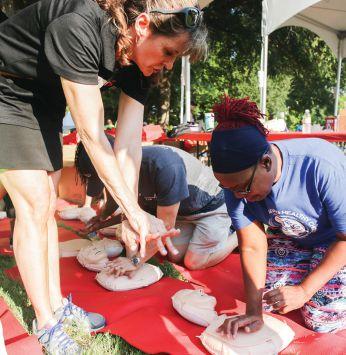



For over 20 years, we’ve had our ears to the ground, our eyes on the ball, and our fingers on the pulse of Fort Worth. This gives us an edge to deliver the city’s best lifestyle, business, and home content.







AUG. 18 Virtual Event
LIFE Recovery Commencement
Union Gospel Mission uniongospelmission.org
SEP. 17 Virtual Event
PAWS Dinner Humane Society of North Texas hsnt.org
SEP. 24
Signature Chefs March of Dimes signaturechefs.marchofdimes.org
OCT. 9
Day of the Girl 2020 Girls Inc. of Tarrant County girlsinctarrant.org
OCT. 14 Virtual Event 65 Roses Wine & Food Extravaganza Cystic Fibrosis Foundation events.cff.org
NOV. 5
Light The Night Leukemia & Lymphoma Society lightthenight.org
DEC. 4
Home for the Holidays Gala Presbyterian Night Shelter journeyhome.org
APR. 24, 2021
Butterfly Wishes Gala a Wish with Wings awww.org
Fall of 2021
Hearts of Gold Giving Rutledge Foundation rutledgecancerfoundation.org
Ongoing Donations
Make A Wish ntx.wish.org
Ongoing Donations
Parenting Center theparentingcenter.org
Ongoing Donations
Legacy of Women/Legacy of Men
Safehaven safehaventc.org
Ongoing Virtual Event
Pivot with a Purpose Wings of Hope wingsofhopeequitherapy.org
There’s nothing more rewarding than giving back and making a difference in the lives of people in this great community. As the city’s magazine — which has the eyes and ears of some of Fort Worth’s most affluent and philanthropic citizens — we feel a responsibility to give back to the people of the city that is our namesake, which is why Philanthropy is one of our core values.
Every year, Fort Worth Magazine sponsors more than 100 charity events, which range from luncheons to black-tie galas. The following promotional section is devoted to these charities and their fundraisers. We invite you to consciously peruse and consider lending a helping hand by either making a donation or attending these events.

Because COVID-19 caused a change or cancelation of the charity events this season, as a service to all the charities in the Greater Tarrant area, we are listing the changes or cancelations as they come in.



2020 Women of Distinction Awards
Featuring powerful Women Who Mean Business Special appearance by NBC 5’s Deborah Ferguson
Wednesday, September 23, 2020
Join us as we celebrate six exceptional women and one exceptional man who serve as role models to the next generation of female leaders.
Benefiting
Buy tickets and sponsorships online at weblink.donorperfect.com/WoD2020, or contact Wendy Lee at wlee@gs-top.org or 817.735.5315.



10 Years in Prison: A Personal Narrative Continued from page 52
a positive relationship with a few family members and friends, and I corresponded with people from all over the world through a service called writeaprisoner.com. For all those years, I was both cultivating negative traits within the social structures of prison while trying to nurture the positive characteristics that were instilled in me from my youth. As low as I’d gotten in life and as deep as I was into the prison lifestyle, I never lost myself.
One of the sweetest, most genuinehearted individuals that I ever got to know through writeaprisoner.com asked me a question while I was in closed custody that I’d never considered: “Have you ever thought about writing a letter to the person you shot?” It was such a basic question stemmed from innocent curiosity. Yet, it sparked profound thoughts and lifechanging realizations.
For the first time, I put myself in my victim’s shoes and thought about how the life I led affected him. I also thought about how my actions were affecting others as well. How all those impacted by my lifestyle and poor choices were undeservingly hurt — my family, my friends, my countless victims. With 24 hours a day in a cell, I had way too much time to think about this. But that was exactly what I needed.
Trying to appeal to the people who wanted what was worst for me had cost me almost everything. Meanwhile, the people who truly loved and cared about my well-being, those who knew the goodness in me, wanted something entirely different for my life and believed I could achieve it.
I’ll never forget the moment of my epiphany. Looking out of the little window on my secured metal door, hearing the hostile prisoners screaming from their cells as one of the uncontrollable inmates in maximum security took on a six-man team of guards in a “use of force” to stand up for his ill-adapted principles. Words of encouragement that a friend once wrote to me in a letter came to mind: “Rock bottom is the best solid ground, and a dead end is the best place to turn around.” That was the moment when I finally said, “Screw this. I don’t want to be one of these people.”
When I was released from closed custody after 15 months, I was finally able to give my mom a hug at one of our twohour visits that she drove over 200 miles to have. I could literally feel the relief in her body as we embraced, and the realization of how my actions affected others really hit me. I had become so numb to my desolate circumstances that I never sympathized with those I was affecting. I thought about how my mom had spent the past 15 months desperately longing to embrace her youngest son; how my family and friends were devastated, sorrowed, and scared for me; and how the weight I had learned to shrug off only rolled onto their shoulders. I couldn’t keep doing this to them.
I latched onto the positive connections I had on the outside and allowed their love and support to influence and reshape who I had become. Instead of living up to the expectations that prison and its culture had beset on me, I focused all my energy and efforts into what those on the outside, who recognized and cultivated the good, believed was possible for me. With the number of friends and family who consisted of my support system, I had too many interested people standing behind me to take any more steps back.
I transferred away from Gib Lewis to enroll in school at another unit and started laying the groundwork for a more promising future. With my support system encouraging me along the way, I distanced myself as far as I could from the prison culture and committed myself toward growth. I first enrolled in a vocational trade school, then a high school diploma program, then college. Going from taking two classes per semester to four, five, and even six at one point. I read every business, self-help, psychology, and personal-development book I could get my hands on. I was learning new concepts, expanding my interests, and tapping into potentials I never knew I had. I just couldn’t get enough.
At one point during this development, I joined a volunteer-led yoga and meditation program called Conviction Yoga, facilitated through the Hughes Unit’s Chaplain program. As my intellect was growing
through my studies, my spirituality began to grow through mindfulness and compassionate practices.
All this was so foreign to me. Going to school, practicing yoga and meditation, doing what was right for others as well as myself. One of the most valuable lessons I learned from my mindfulness teacher seemed to stick with me — “everything you ever wanted is just on the other side of your comfort zone.” So, I continued to stretch.
In time, my whole life started to change. My attitudes began to reshape, my values became more well-rounded, and my future developed a brightness that I never thought could have existed. When I was granted parole in 2019, overwhelmed with relief that this chapter was finally closing, I took a moment to reflect on how long of a road it had been. Not in the sense of time, but in the sense of journey. The transformation of who I was going into prison compared to the person I’d become never would have occurred if it wasn’t for those people on the outside who refused to give up on me.
Statistics vary, but the state of Texas has an 85% recidivism rate. In other words, 17 out of 20 people released from prison will eventually lead themselves back into a life of crime and be reincarcerated. Reflecting on my personal experience, our prison culture can be counterproductive to rehabilitation. In prison, people are taught ill-adaptive principles that they carry with them once released; this primes their life for failure. My experiences, realizations, and epiphanies carry a certain obligation — an obligation to go back to my roots and plant the seeds of growth in people who at this point in time might not deserve their freedom. To, this time, be the person who is there for someone else.
I owe everything I am today to the people who cared enough to be a part of my life while I was at rock bottom. Because of them and the changes they instilled, I’ll be a part of that 15% that doesn’t lead themselves back into a life of crime.
I love you, Mom.


of all media, which do US internet users say they TRUST THE MOST?

(Marketing Sherpa, 2017)

when more than 1,400 US advertisers were asked which medium offers the highest FOI, which was on top?
WITH A $3.94 RETURN FOR EVERY $1 SPENT. A FULL 50% HIGHER THAN THE $2.63 AVERAGE ROI FROM DIGITAL DISPLAY AND MORE THAN DOUBLE THE $1.52 FROM DIGITAL VIDEO.
(Nielsen Catalina Solutions, 2015)
Print creates an emotional connection. Print builds relationships.

The average time spent on a website is 2 minutes what is the average TIME SPENT READING A MAGAZINE?
(Digital First Content Marketing: The Return of Print, - CMO by Adobe, 2016)
Physical material is more “real” to the brain, involves mor emotional processing, is better connected to memory, with greater internalization of ads — all important for brand association. (FORBES)




“The photo is inspired by the scene from ‘Willy Wonka & the Chocolate Factory,’ where Grandpa and Charlie levitated to the top of the bubble room after drinking the Fizzy Lifting Drinks … The vibrant colored glass [of the windmill at The Shops at Clearfork] caught my eye because it reminded me of the breathtaking stained-glass paintings in Catholic churches. I was shooting the exterior, and as per usual, my curiosity led me inside the windmill. As a person blessed with height, I enjoy tall objects because it’s humbling to experience objects that are taller than me. I was shocked that the windmill was a cocoon of color.”

So you’ve snapped a cool pic of the city. We want to see it. Tag your photos on Instagram with #fwtxmag. The winning image will get published on this page — so hit us with your best shot. main line 817.560.6111 | subscriptions 800.856.2032 | website fwtx.com
Every single day, the agents of Briggs Freeman Sotheby’s International Realty — more than 400 strong across North Texas — help find homes where everyone can feel safe and sound. And inspired. And included.
Since 1960 and counting, our agents have understood deeply what home and community mean to everyone.
Home is your shelter. Home is your sanctuary. Home is your soul. It’s not just where you keep your things — it’s where you keep your heart.


The Jaguar F-Type SVR is a true sports car that catches your eye the second you spot it and revives the spirit of the classic Jaguar coupes. With stunning good looks and heart-pounding power and speed, the Jaguar F-Type SVR is what a sports car should be all about. Just ask Frank Bracken, CEO of Lonestar Resources, who couldn’t be happier with his 2019 Jaguar F-Type SVR from Park Place Jaguar DFW. “I was blown away by the appearance of the Jag, and it is an absolute rocket ship when it comes to performance — 575 horsepower, zero-to-60 time of 3.5 seconds is so fun to drive,” Bracken says. “I am already looking forward to buying the next model F-Type.”

Bracken, a Fort Worth resident and River Crest Country Club member, returns to Park Place Jaguar DFW in Grapevine because of its “great inventory, great salesmen, and great service.” After purchasing a 2019 Land Rover Range Rover SUV for his wife, Erica, he returned to the dealership a month later to buy his Jaguar. “I could not be more satisfied as a Park Place customer and won’t consider buying my vehicles anywhere else,” Bracken says. “Park Place is My Place because I feel like family from the second I walk through the front door of the dealership.”